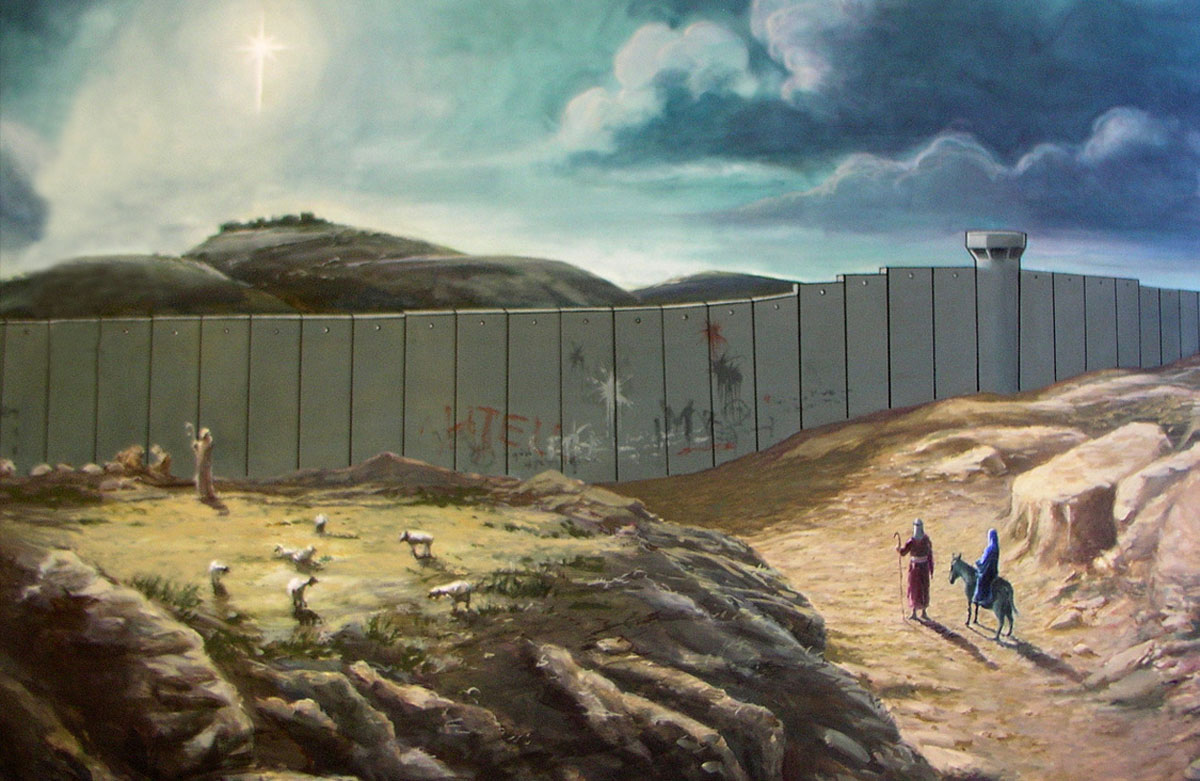Bethlehem
Beside the road...” And on the tomb, no sight
Of any name, inscription and no mark up.
At nighttime, there’s a gleaming feeble light,
And whitewashed with chalk, the grave’s cupola
With enigmatic paleness is attired.
I’m timidly approaching as the night falls
And kiss the dust and chalk in awe and thrill
Of this tombstone, artless, white, and cold
The sweetest of the earthly words! Rakhil!
Bus number two hundred thirty-four arrives at the stop with a military name “Bethlehem — Checkpoint 300”. Final destination; the route terminates here. But instead of the ancient city of Bethlehem, a huge wall about seven meters high emerges before the traveler, stretching beyond the horizon.
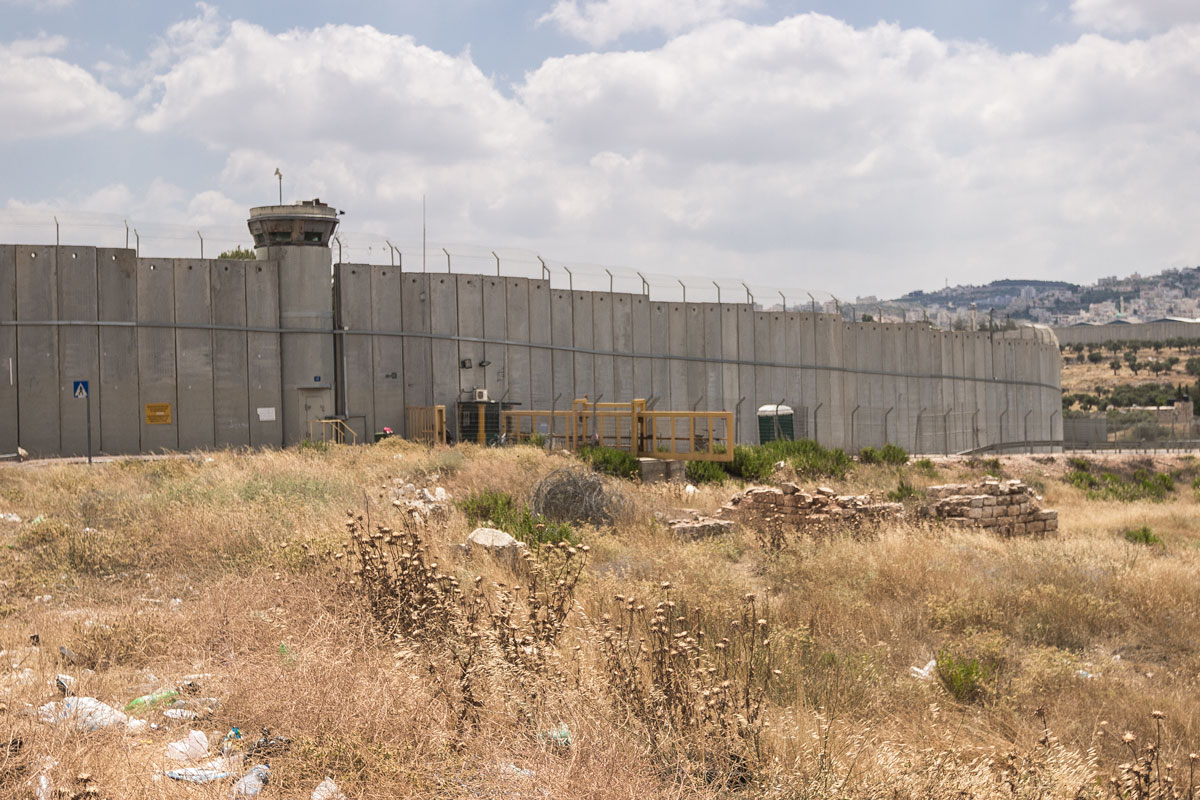
There is no passage to the city. Hebron Road ends with a roundabout, beyond which the road continues for a few more meters and reaches huge steel gates in a concrete wall.
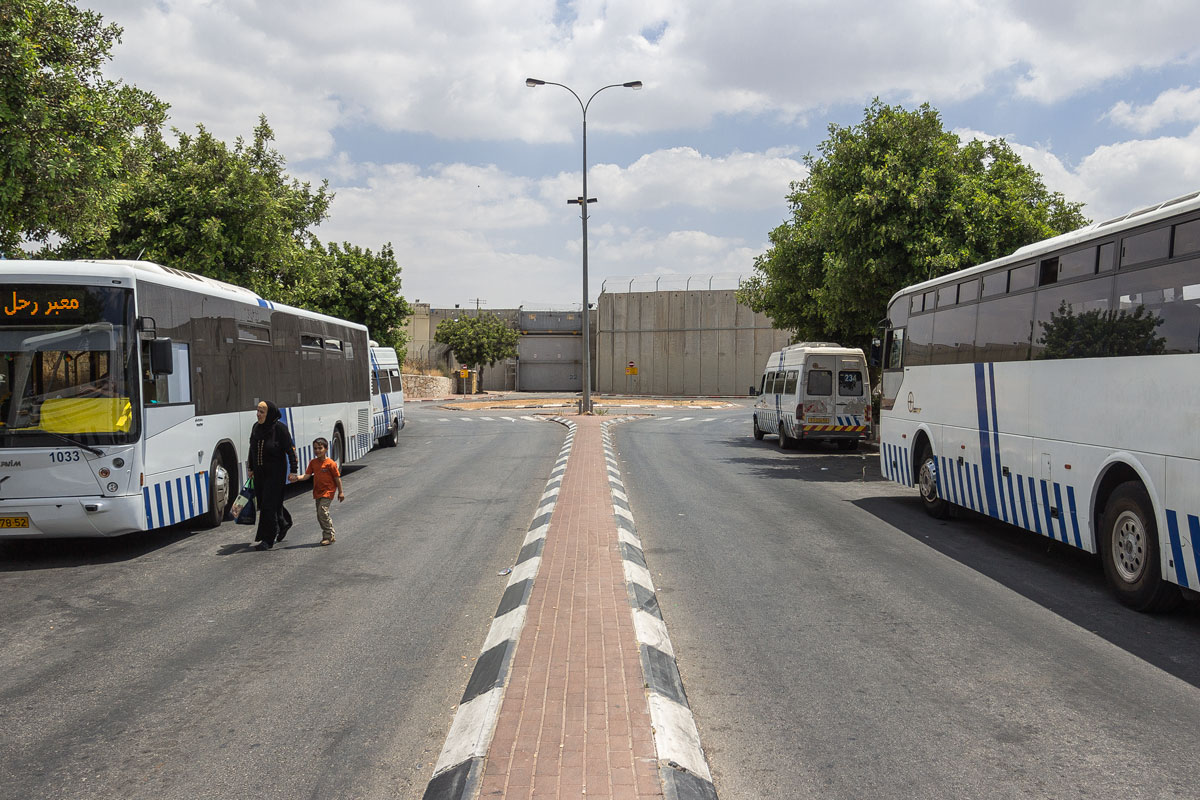
Instead of a welcome sign saying “Welcome to Bethlehem,” there is a cautionary inscription that says “Welcome to the inspection point.”

Now the only way to get from here to the city is to walk through the military checkpoint via a narrow winding corridor, surrounded on both sides by fencing and barbed wire.

Gradually, the passage narrows and transforms into a narrow strip where no more than two people can pass at a time. During rush hours, when Palestinians with special permits to enter Israeli territory are heading to work in Jerusalem, the corridor becomes crowded with people, squeezed between two walls like a herd of animals being driven to pasture.
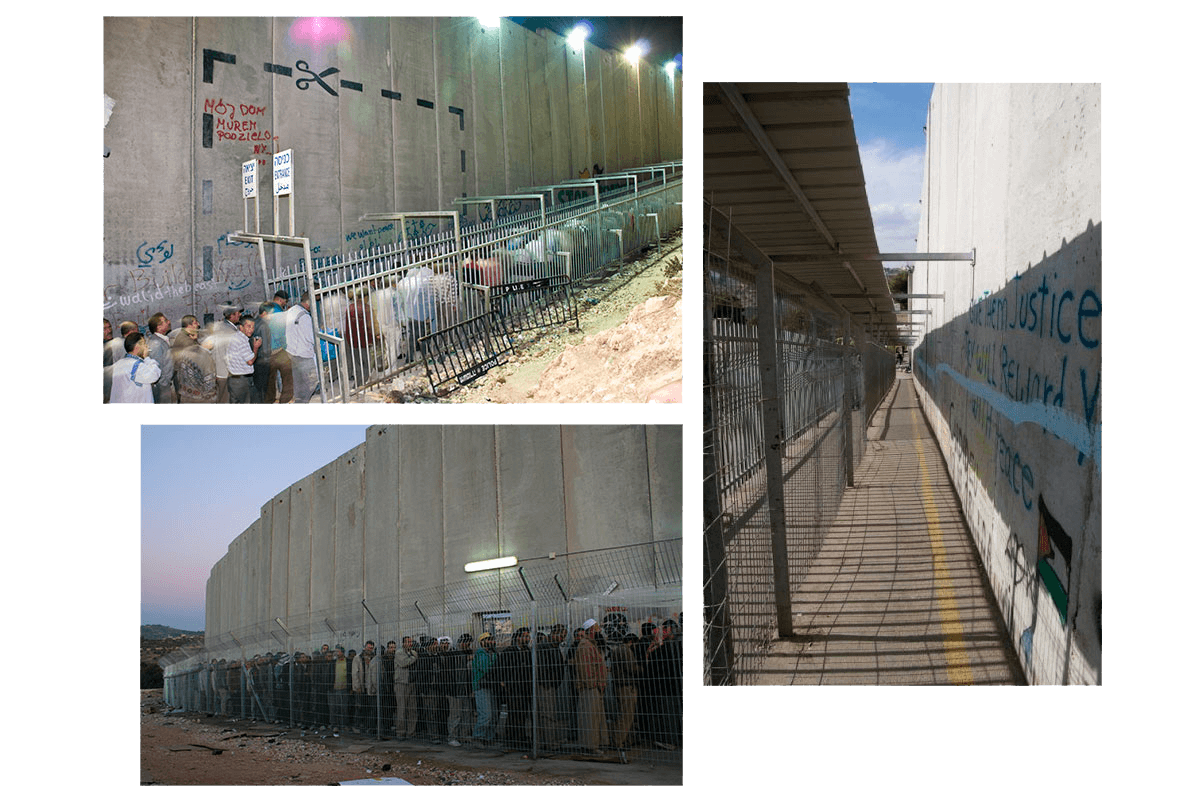
Inside the checkpoint, there is a dense forest of iron bars planted on turnstiles, narrow clearance lines where people squeeze through one by one, with a rusty creak and slightly pulling in their stomachs.
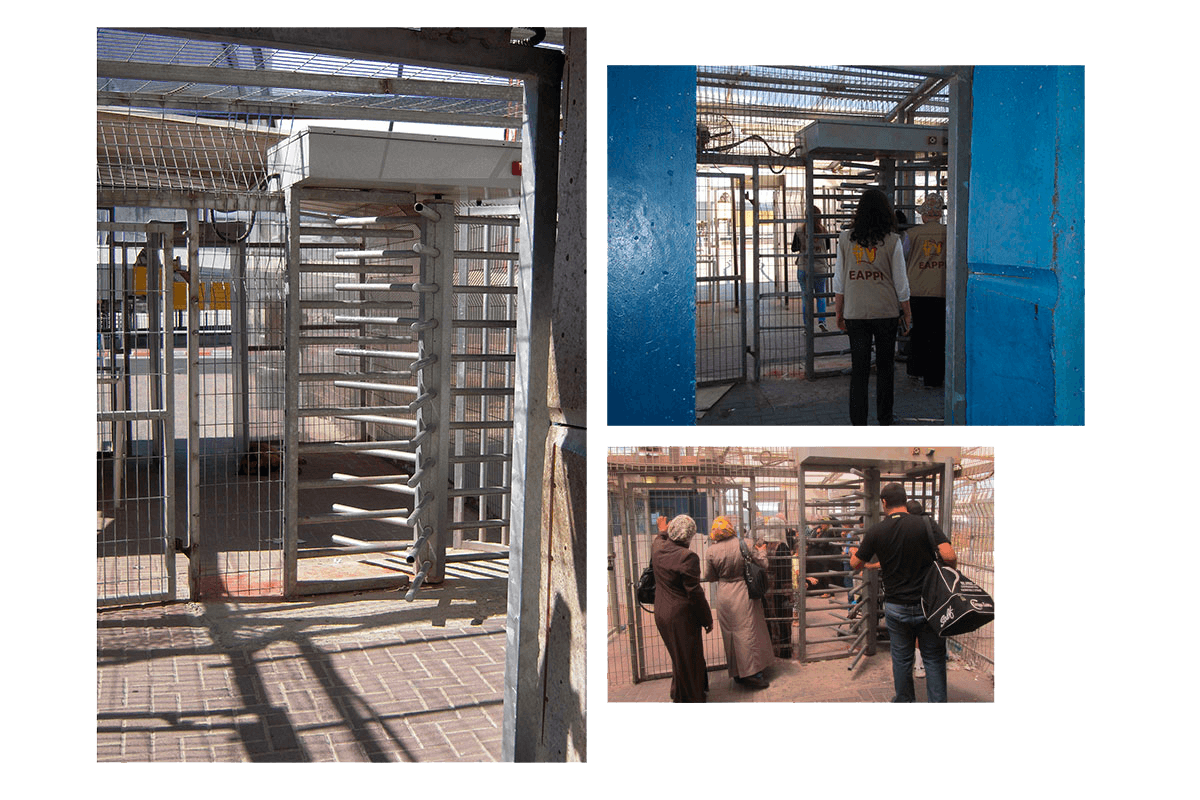
This is how the crossing looks only when going from Bethlehem to Israel. Upon entering the city, there is no control, just like when entering Ramallah. There is no need to protect Palestinians from Israelis; there is a need to protect Israelis from Palestinians.
But it would be a mistake to think that immediately after the Bethlehem border crossing, all military presence instantly disperses and ancient walls emerge on the horizon. First, one must pass through concrete structures near the checkpoint.
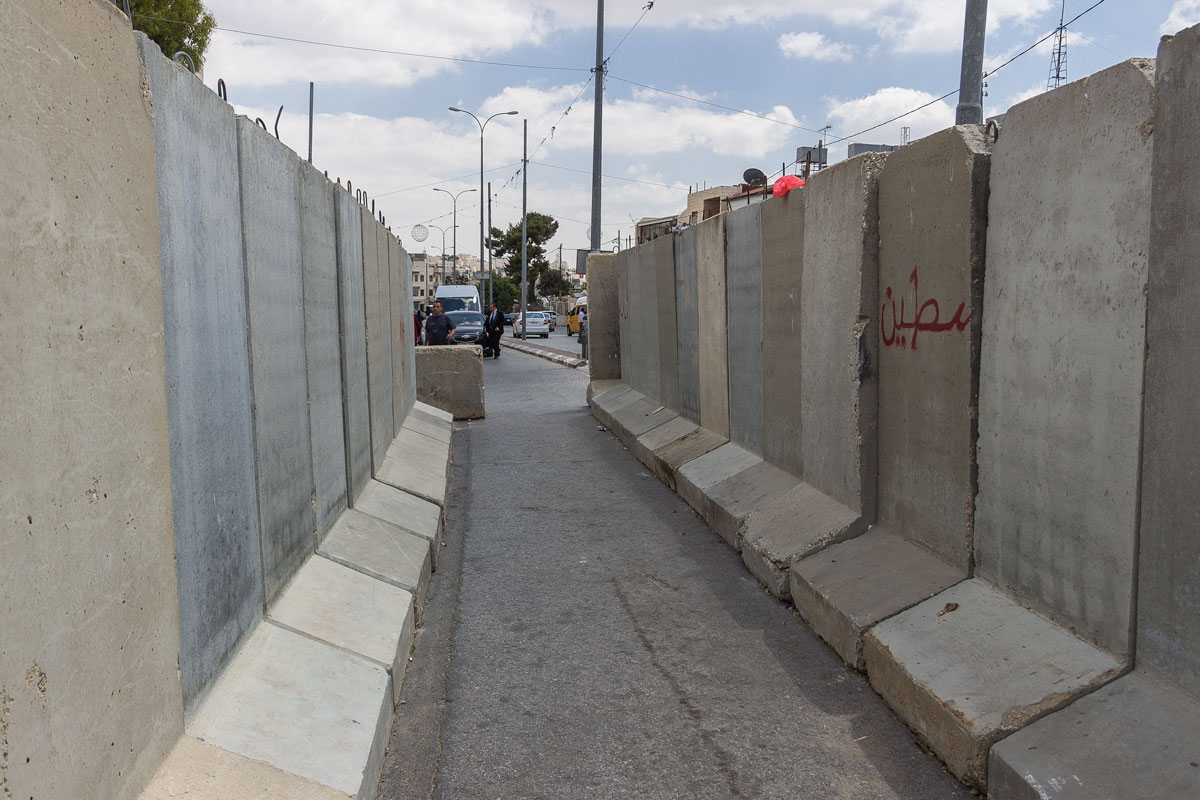
Walk a few hundred meters among souvenir shops and residential houses, taking one more look at the concrete procession stretching into the horizon.
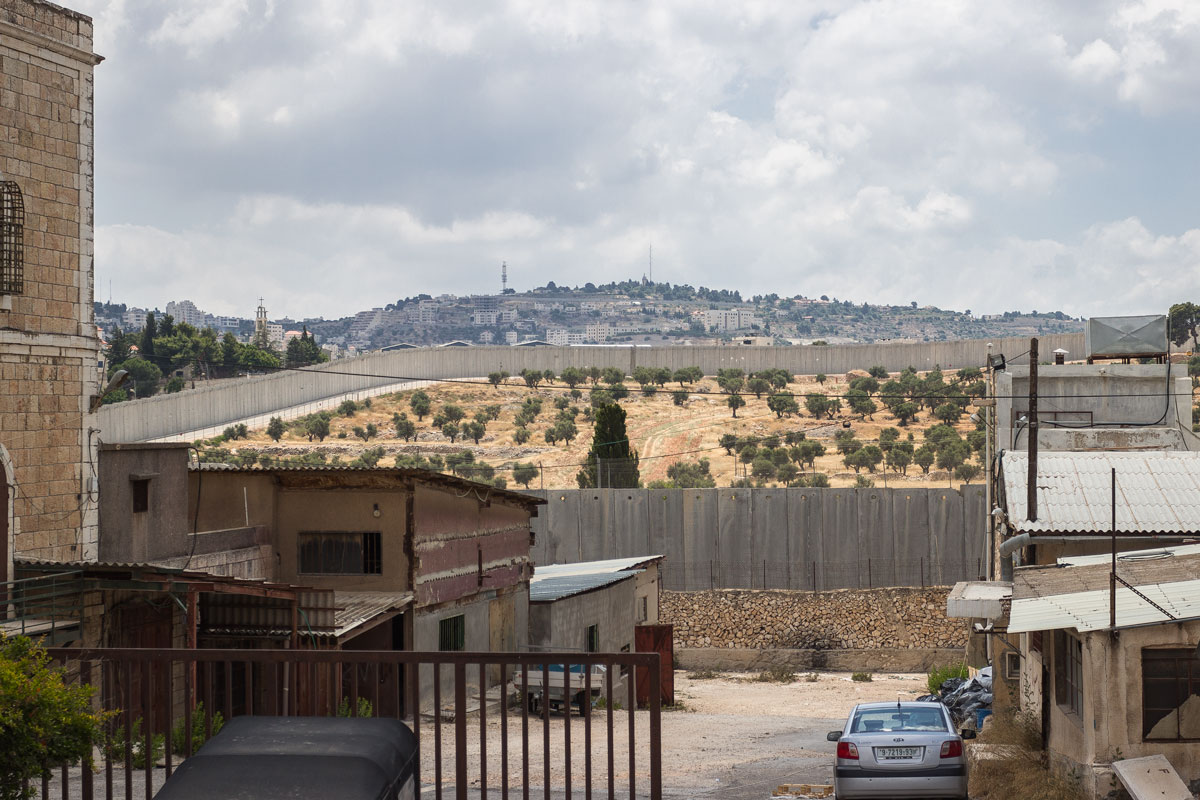
And only then will the Bethlehem walls rise, but they are far from ancient. Even before the typical urban development begins, something foreign intrudes into it from the very first steps.
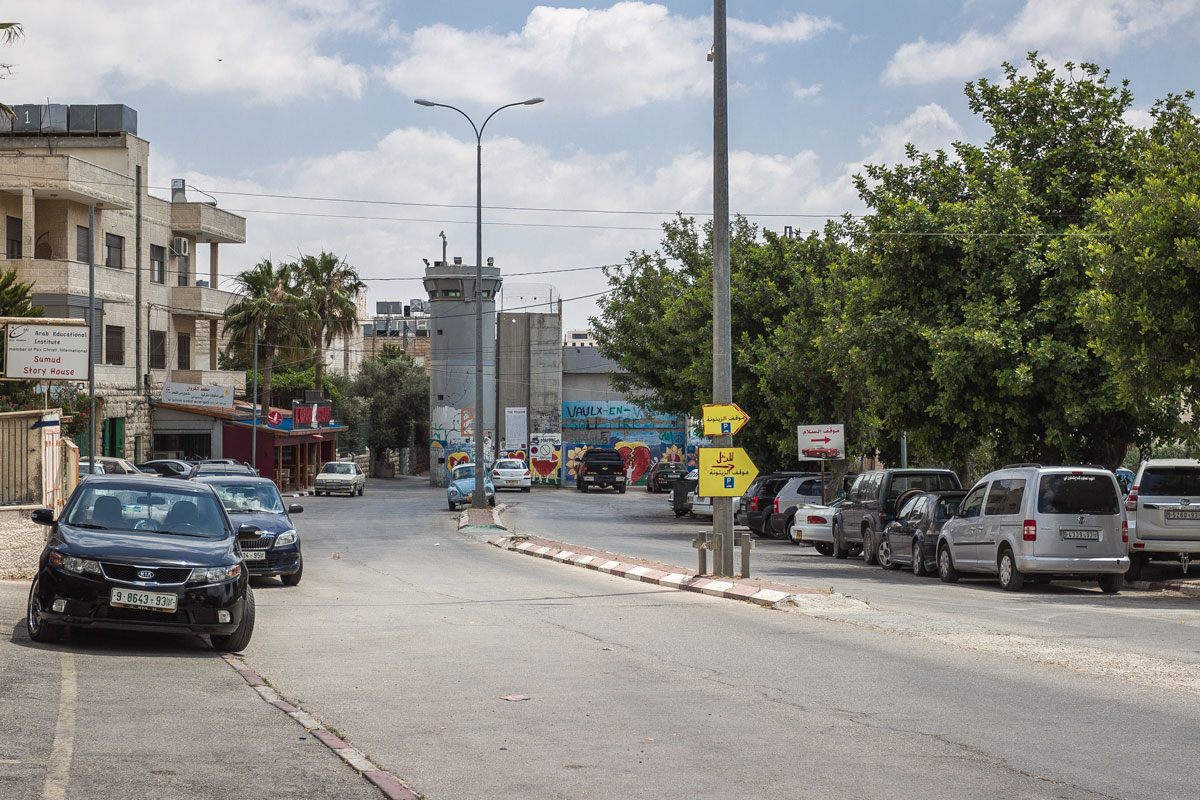
This is another wall, or rather the same one that surrounds Bethlehem, metastasizing into the city. Huge concrete slabs with an otherworldly steel gate embedded in them and a solid observation tower with armored glass. This is Bethlehem.
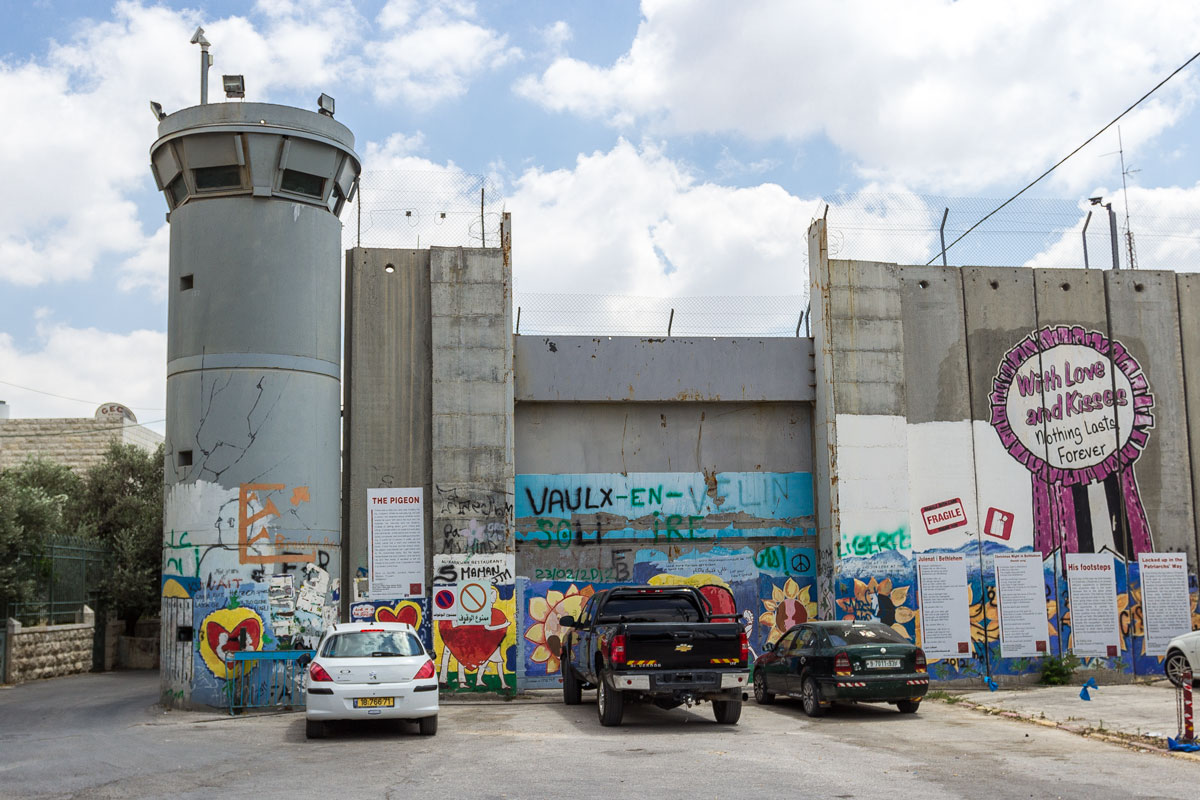
“With love and kisses. Nothing lasts forever.” — All the walls on the Palestinian side are covered in graffiti.
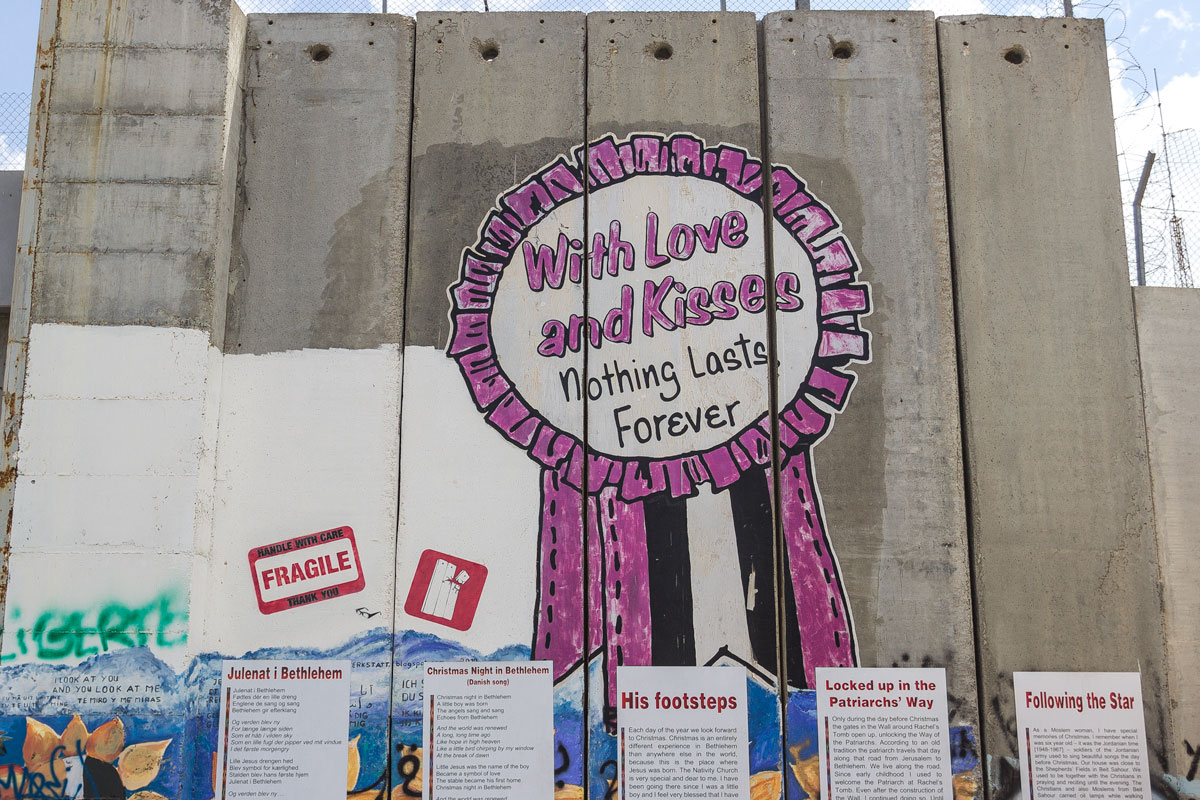
Along the entire wall, there are posters with texts written by different authors about the life of Bethlehem.

But we won’t dwell on every sign and will continue walking further. The wall will accompany us for a long time, and we will have ample opportunity to enjoy its messages.
On the map, the first highlighted point in Bethlehem to visit is Rachel’s Tomb. It’s not far from here, just a couple of hundred meters away. Rachel, or Rakhil, is a well-known biblical figure, the wife of patriarch Jacob, revered in all three religions: Judaism, Christianity, and Islam.
On the left side of the steel gate, there is a narrow passage one can slip into. There is no sidewalk; the entire passage is occupied by a nearly deserted road. On the right side, the wall presses against it, while on the left side, residential houses stand just a few meters away from the wall.
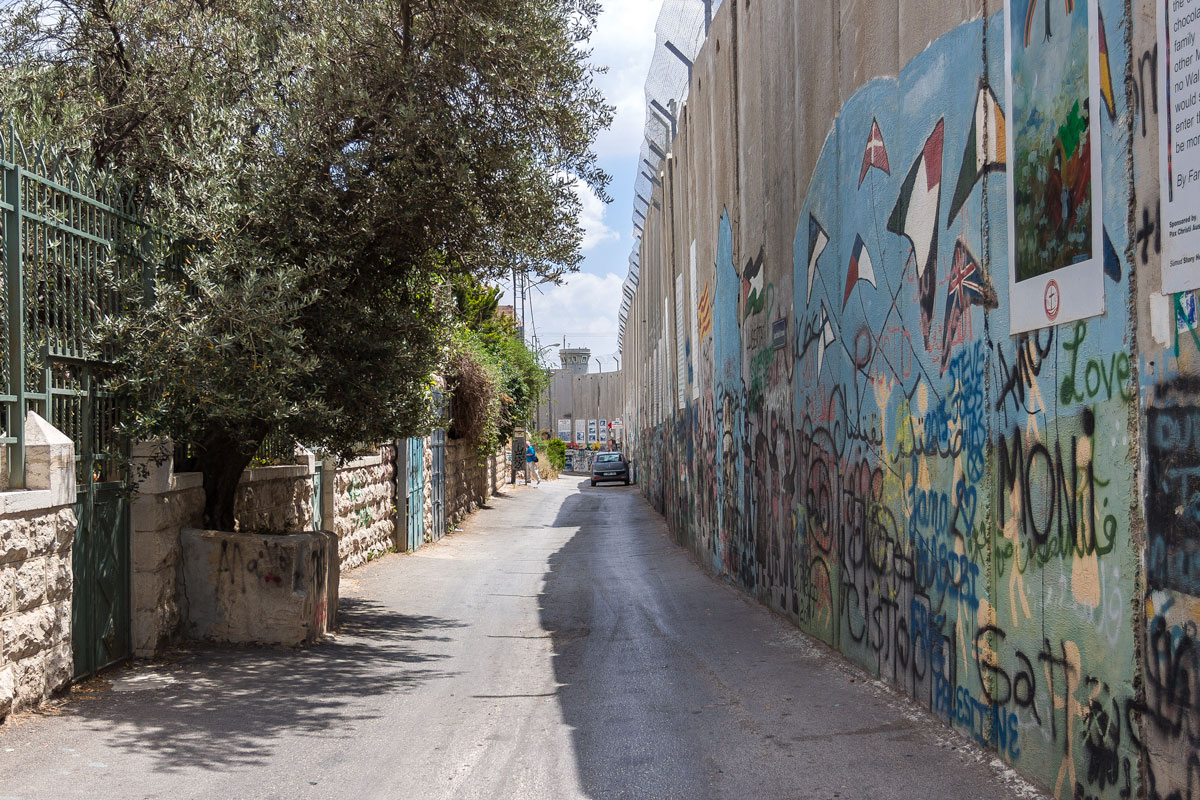
Rachel’s Tomb is straight ahead on course. However, the stubborn wall leading to it veers away from the destination, making a sharp turn to the left.
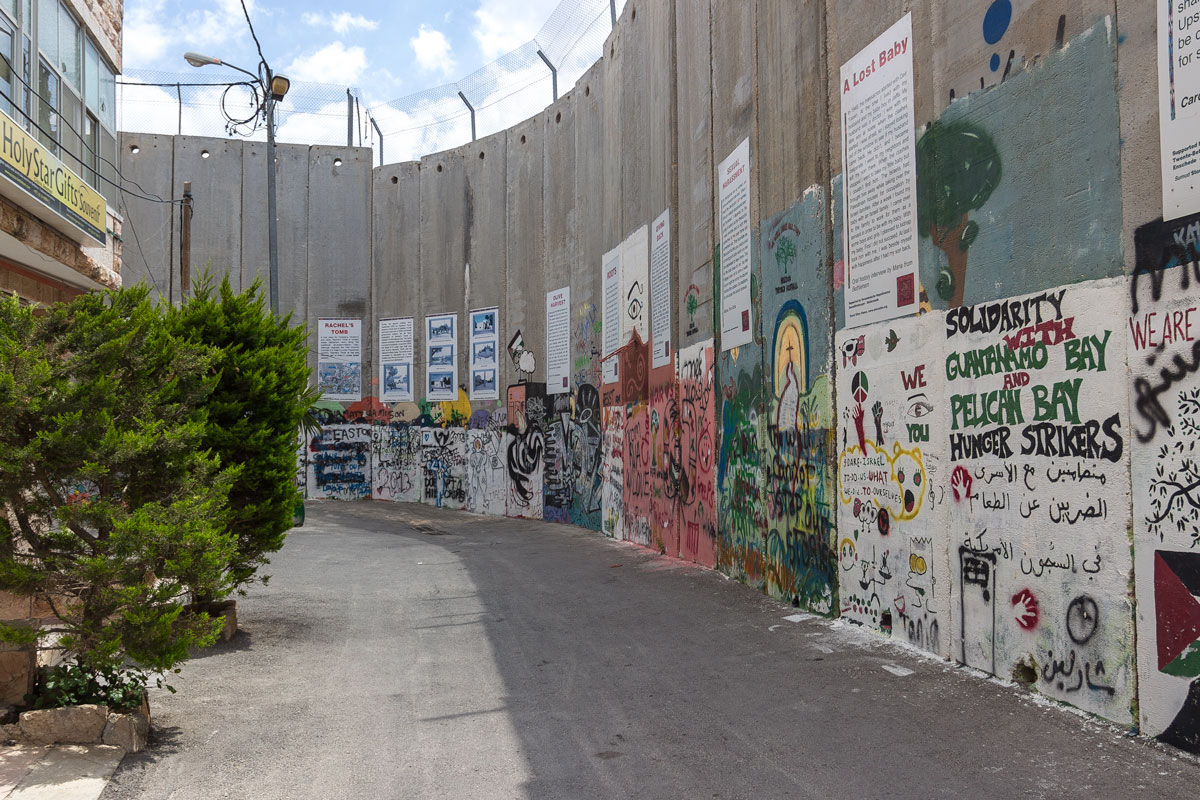
Beyond the turn, the narrow road reaches a dead end, skillfully adorned with graffiti. Where do they all come from? Talented drawings mixed with marker inscriptions — they cover the entire wall wherever the artists could reach.
At the very dead end, on a small fence, there is a drawing of a pigeon in hippie colors with the inscription “Anastas wants peace.” Funny name: Anastas.
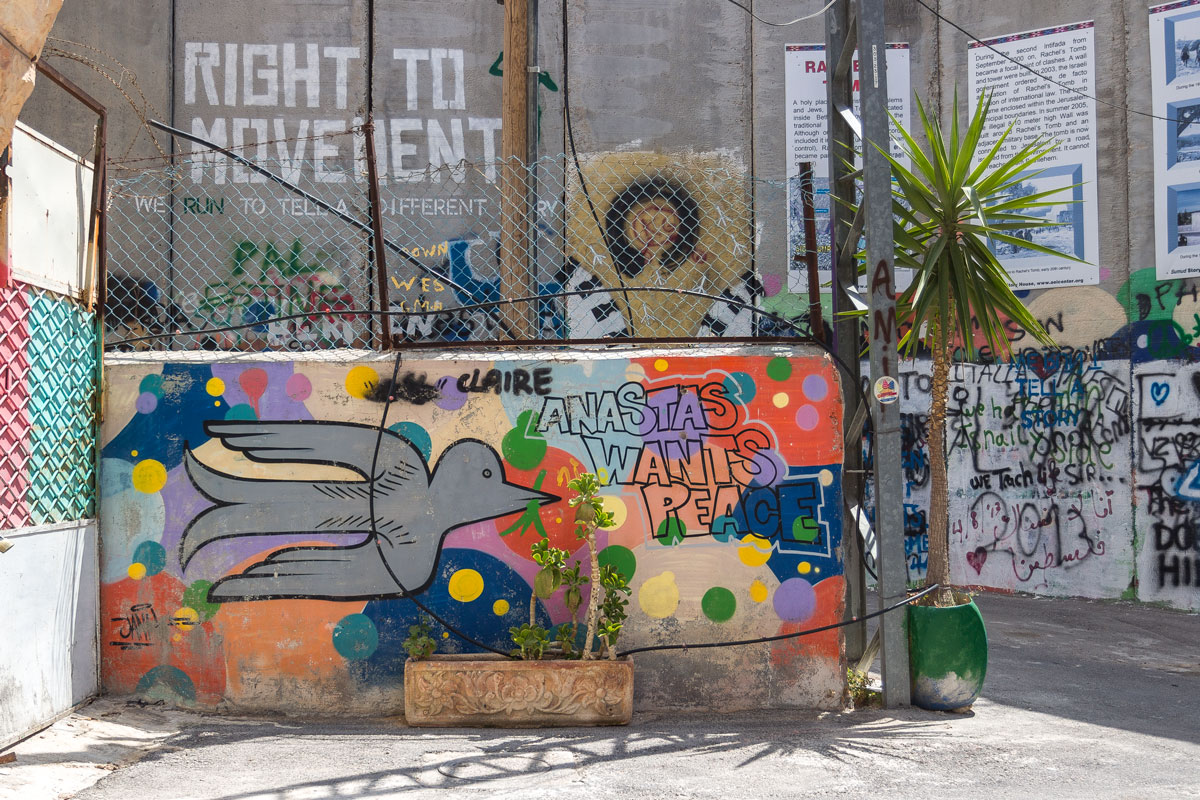
On the very wall, there is such a number of drawings that translating all of them would require a separate story.
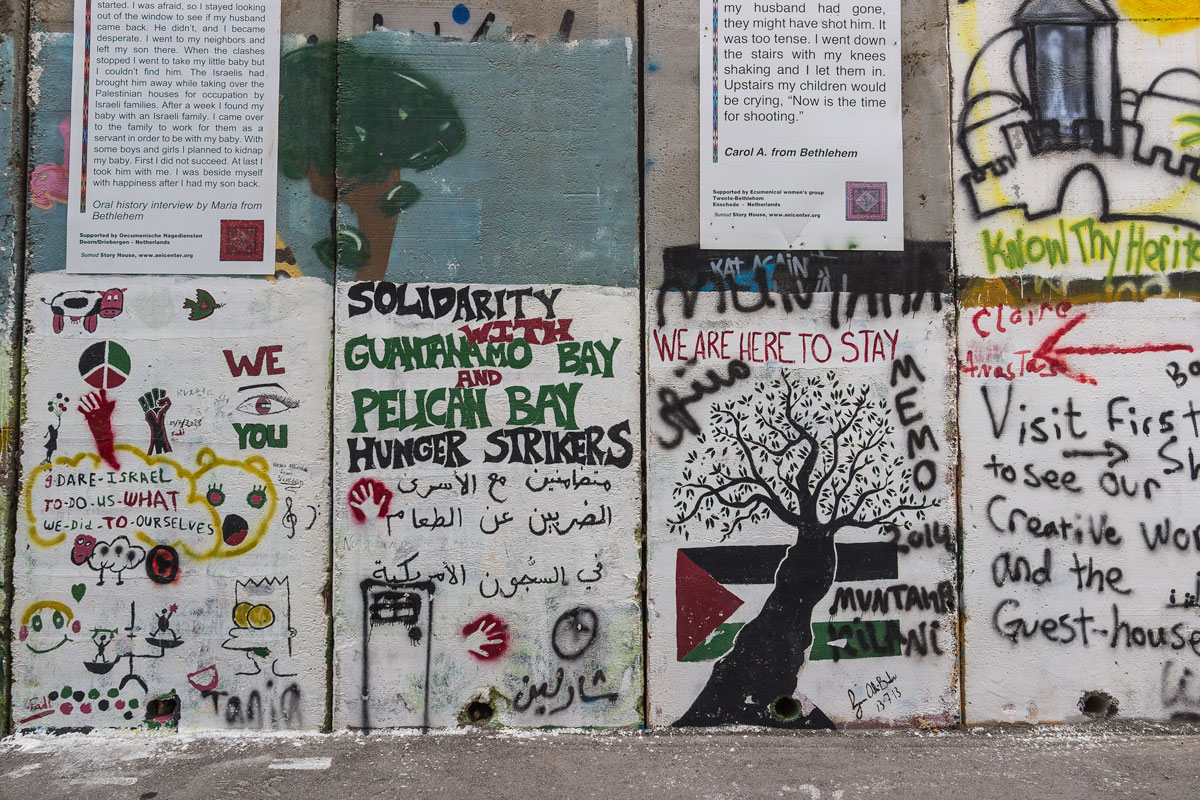
One of the posters catches attention with something familiar: “I’m Ukrainian, married to a Palestinian.” Ukrainian Irina lives in Bethlehem, amidst these walls!
“I am an Ukrainian woman married to a Palestinian man. During one of the last incursions of the second Intifada, Israeli soliers gathered all members of my family in the house and ordered them to lie on the floor. At the time I was pregnant, but they forced me to lie on the floor too, along with my children. We had to stay on the floor for four hours while the soliers were watching TV in our house. At one point, one of the soldiers started to laugh and throw sweets at us while we laid there.”
Almost every concrete block of the wall in this place is equipped with a plaque displaying a similar story.
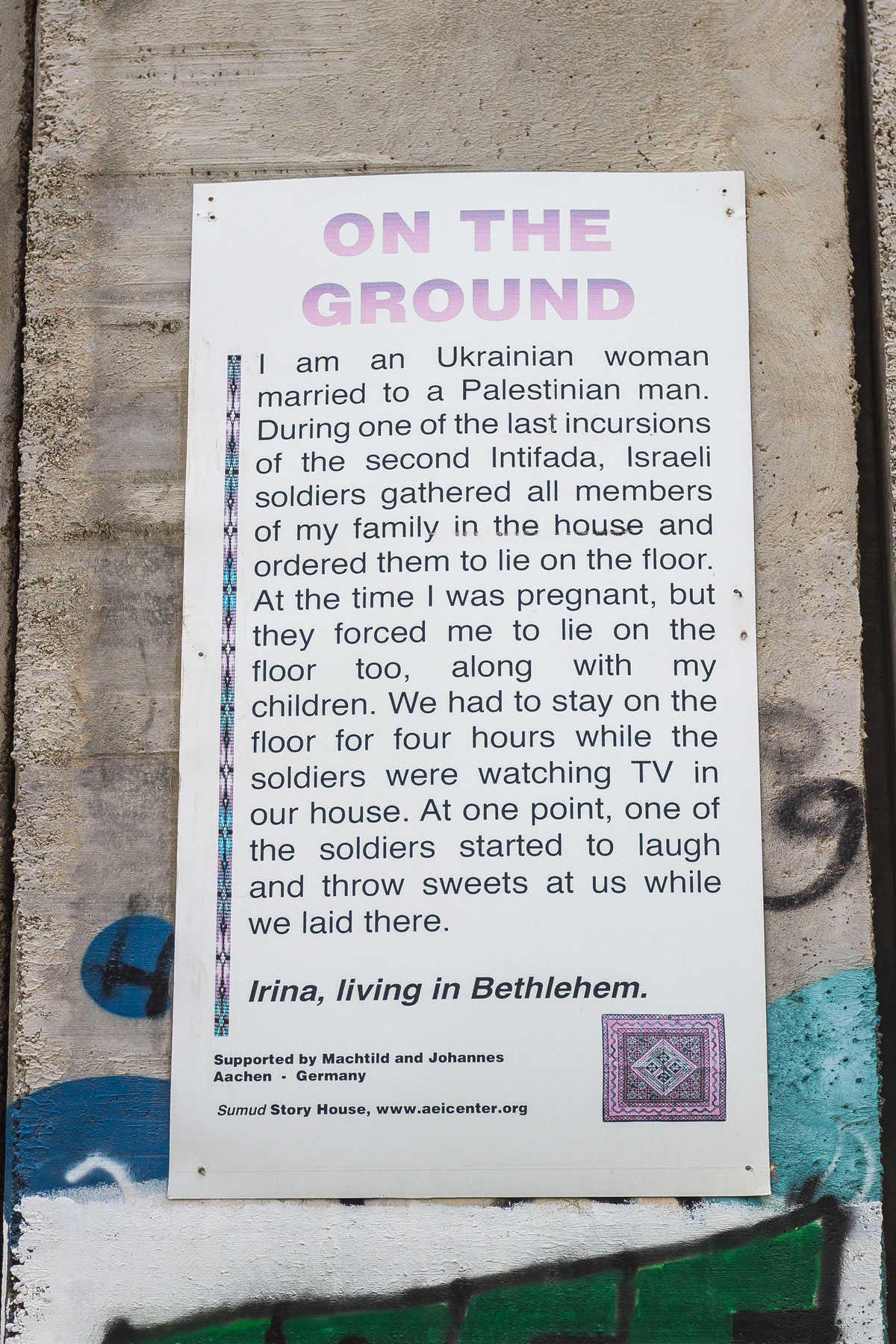
And in this dead-end, opposite the wall, there is a souvenir shop. Funny how it got carried away here. And who on earth came up with the idea of opening a shop here, let alone a café and guesthouse? Who would come here to buy souvenirs?
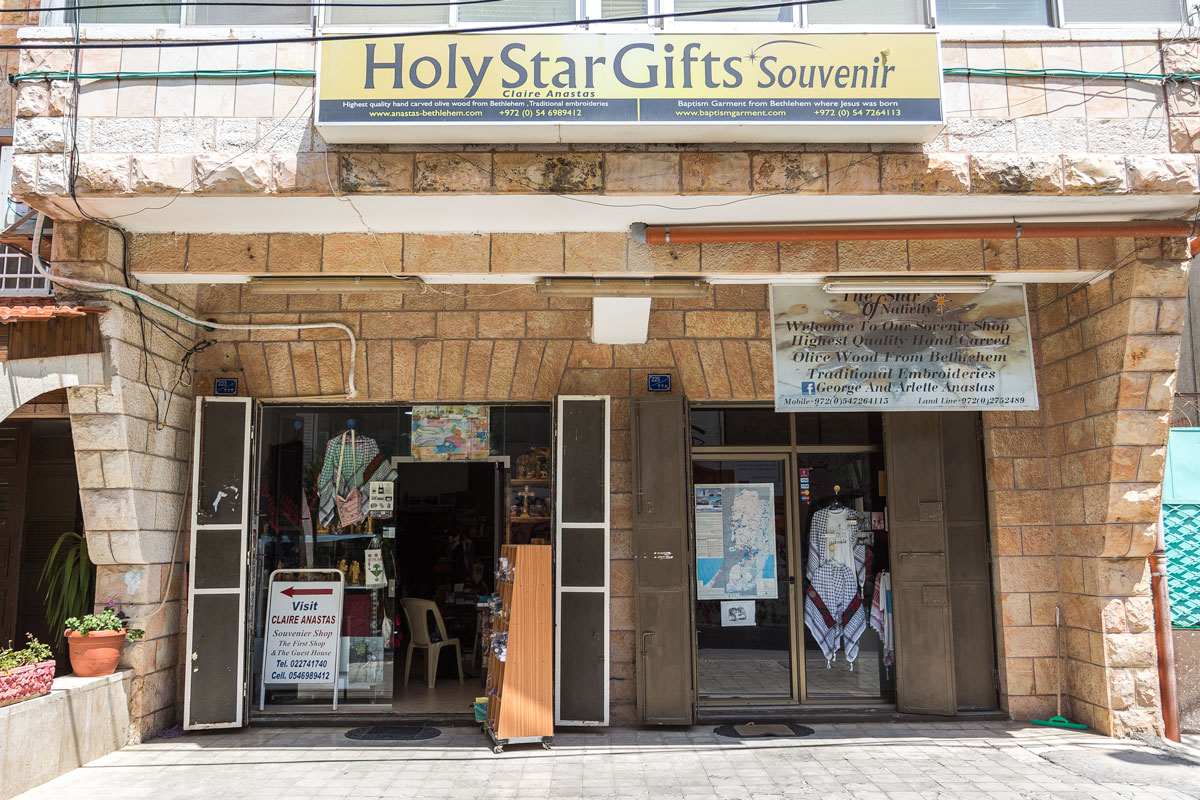
A woman in her forties appears at the store door.
“Hello, guys!”
“Good day. Are we not bothering you here?”
“No, not at all. Would you like some coffee?” Oh my, what is she talking about? How can anyone want to drink coffee in such a place?
“I’m not sure, there’s no time...” but the June heat, fatigue, and the deaf wall that has been chasing us for several kilometers now make us stop and catch our breath. “Alright, let’s do it!”
“Great, I’ll bring it right away. I make excellent Arabic coffee. You can come into my shop for now; it’s hot in the sun.”
The woman goes somewhere through the adjacent door to prepare coffee, and we enter the souvenir shop where, as expected, only useless junk such as carved figurines, badges, flags, magnets, and other trinkets are sold.

After a few minutes, the woman returns with a silver tray containing a smoking Turkish coffee pot, a small container of milk, and two tiny coffee cups. She places the tray on one of the chairs, pours the coffee into the cups, dilutes one with milk, sits down next to us, and introduces herself with the first sip of strong Arabic coffee:
“My name is Claire Anastas.”

The fate of this house, squeezed between three walls, is sad and shocking. Once, there was no wall here, just an ordinary road leading from Jerusalem to Bethlehem, and Claire’s house was one of the houses on the outskirts of the city. A large family with the surname Anastas — 14 people — lived in it. Everything turned upside down in a single day.
“This is my home,” Claire begins her story, “where we have been living for many years. It used to be a very nice place, green. There were olive fields nearby, and our friends and relatives lived close by, owning parts of those fields. Now it’s an abandoned wasteland. Do you see that narrow road between the wall and the house? It used to be the main highway from Jerusalem to Bethlehem. My family had three businesses: we owned a souvenir shop, a fruit stall, and an auto repair workshop. The souvenir shop was incredibly popular among tourists who flocked here to see Rachel’s Tomb.”
“And then Israel built this wall?”
“Exactly. They first blocked the road with stone barricades so that no one could pass. Then they destroyed our entire business. Just think about it: who would go to a shop with no road or access? We lost our livelihood completely. And then the Israeli military occupied our house and turned it into their headquarters. Can you imagine? They set up an observation post on the roof and didn’t allow us to go up there; we tiptoed around the house. God help us, but the children were terrified!”
“How is that even possible? How could they take away your home?”
“They simply took it. Showed some papers, a military order, and occupied it.”
“But why did they need to make their headquarters specifically in your house?”
“They were building the wall here, and the house happened to be only three meters away. Its roof was just slightly higher than the wall. They decided it posed a threat to them, so they installed cameras everywhere and stationed snipers on our roof. It was madness! And we lived like that for several years. Can you imagine? Your own home occupied by some military, forbidding you from using the roof and moving around the house after curfew! We were afraid even to approach the windows; we slept by the doors in case they accidentally shot us.”
“What a nightmare, it’s unbelievable... And how are things now? Are the military still in the house?”
“No, they’re not in the house anymore.”
“So, everything is fine then?”
“Oh no, everything is very bad. Look around,” Claire gestures in all directions, “there’s a wall there, a wall there, and a wall here. Our house is trapped between walls on three sides. There’s a narrow passage left leading to the checkpoint. Even sunlight doesn’t reach here because of these walls! Look out of the windows on the second floor, from the bedroom, from the children’s room — you can only see the wall and barbed wire! And the worst part is that we have to survive now because there are no more tourists or locals. We closed the workshop and the fruit stall. Only the souvenir shop remains, but we only get a few customers throughout the day. I sell some things online...”
“Is there any hope that things will get better?
“There is always hope,” Claire smiles. “We believe. Anything can happen. You know how this wall appeared? My children went to school in the morning. There was no wall. But when they returned, they couldn’t pass through to our house because a wall had grown.”
“Are you saying that the wall was built in a day?”
“Yes! They built this whole section of the wall in just a few hours. In the morning, there was no wall, and by evening, the house was surrounded on three sides by a seven-meter wall!”
Claire’s story was speechless. Perhaps, something needs to be told in response or asked. But what can you ask here to not look foolish?
“Have you finished your coffee? Come, I’ll show you something.”
Claire left the store and approached the place where the wall curves to the left. Here, due to the sharp turn, the gaps between the blocks are slightly larger than in other places. Claire peeked into the opening between the blocks.
“Look, around this time through the gap, you can see Orthodox Jews in traditional clothing. They stand on the other side of the wall, there’s a bus stop... Hmm, there’s no one there now. Maybe you can check on the way back.”
“Claire, why is the entire wall covered in graffiti? Do you paint them?”
“Banksy.”
“Ha-ha, yeah right, Banksy!”
“No, don’t laugh. There are many of his artworks here.”
“Are you serious?”
“Absolutely. Of course, he didn’t paint all this mess himself. Many people came here and painted, they covered the whole wall. But if you go around the corner, you’ll find Banksy’s paintings there.”
“And did you meet him?”
“I did. He visited my house.”
“So Banksy isn’t a myth, he exists?”
“He exists”, Claire smiled sweetly, apparently amused by how quickly I forgot about the tragedy of the wall and shifted focus to the mysterious street artist, “He even allowed me to sell copies of his works without restrictions. You can buy postcards in my store.”
We went back into the house. It turned out that there were two turntables in the store, completely filled with postcards featuring Banksy’s artwork, and the counter was cluttered with badges, magnets, and other branded merchandise. Claire also took out several photographs of her home taken before the wall was built.
“Here is a picture of the day when the wall was erected. Look, my house is on the left, and my brother’s house is on the right. We lived nearby, we just had to cross the road. And now there’s a wall between us. And to get around it, you need to make a detour of one and a half kilometers. Our relatives still live there, and now we have to get around to them too. What can we say about olive fields, they are now on the territory of Israel. They took everything from us.”
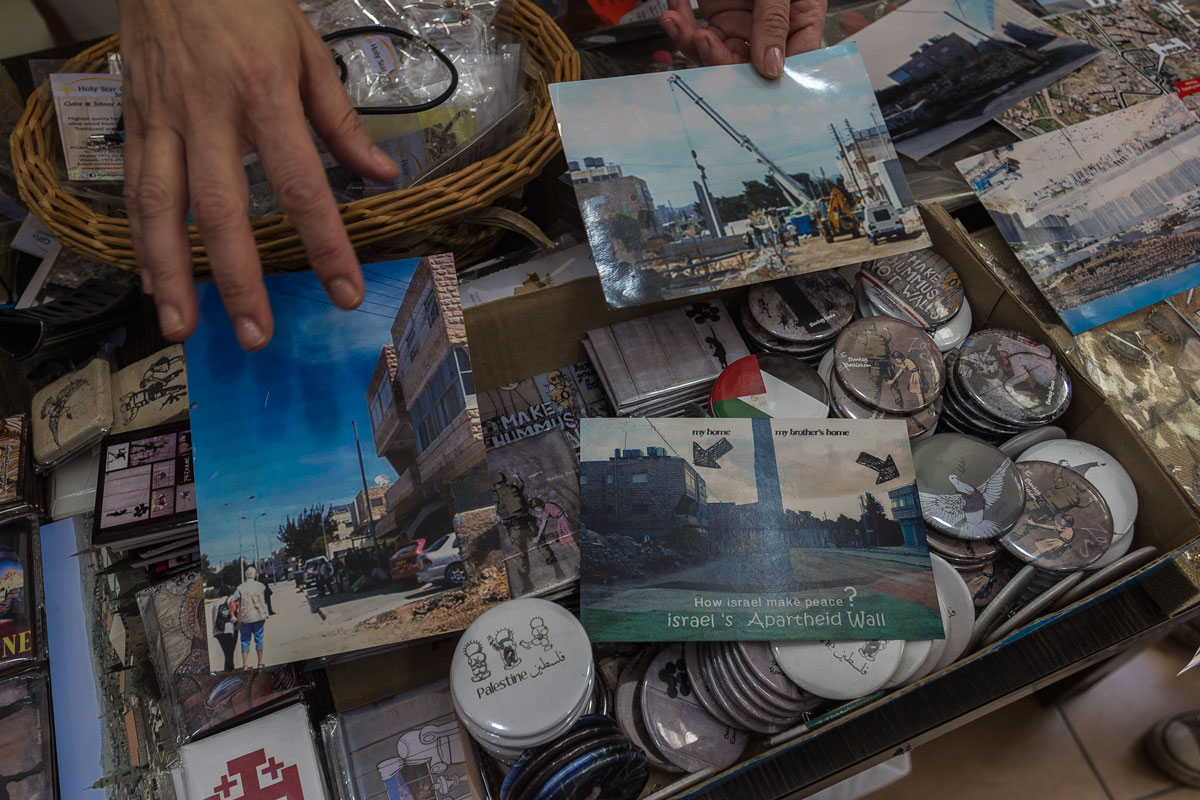
Claire holds out a business card of her shop and guest house, on the back of which is a map of the passage of the wall. For some reason, the wall does not go in a straight line and does not describe the border of Bethlehem. In one place, right next to the house of the Anastas family, it makes an intricate detour and enters the city for about a kilometer.

Claire takes a pen and marks several points on the map.
“I marked the spots on the wall where you’ll find Banksy’s artworks. You missed one of the graffiti; it was at the entrance to the city, although it wasn’t exactly Banksy. The next one is very close by, just around the corner.”
“Thank you. Claire, why does the wall run straight everywhere but makes that hook right next to your house?”
“I’ll explain now. You see, here on the map, the Tomb of Rachel is marked...”
At that moment, tourists enter the store, and the woman’s attention shifts to the visitors.
The Tomb of Rachel! It’s been almost an hour since our conversation with Claire — we completely forgot where we were going! It’s time to pay for the coffee, buy a few postcards out of politeness, and continue on our way.
After exiting the concrete corner where the Anastas family’s house is trapped, you need to turn right, where the wall continues after the curve.
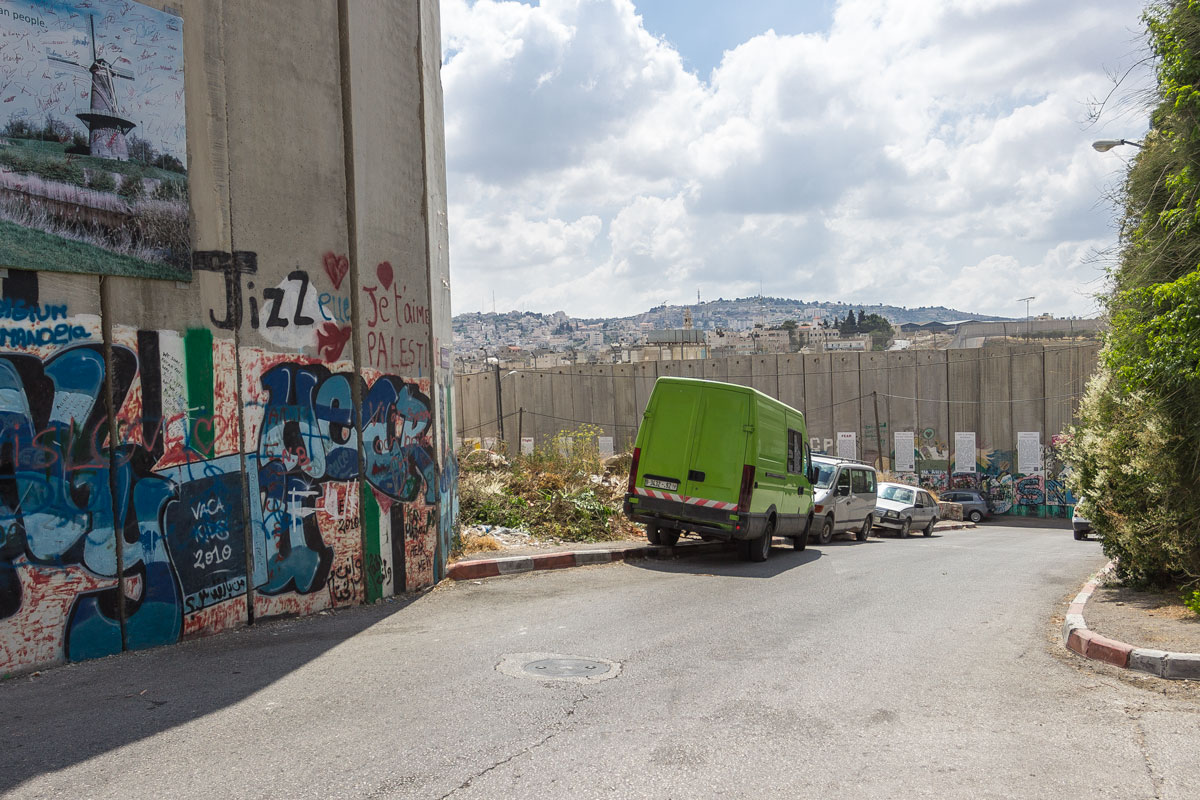
In this place, the wall has been transformed into one large art installation. Many of the paintings are done by Palestinians themselves. The majority of the most impressive works belong to foreigners: street artists from around the world come to Palestine to leave their mark. Each artist has their own distinctive style. For example, the white drawings with black lines are the works of an Italian artist known as Blu.
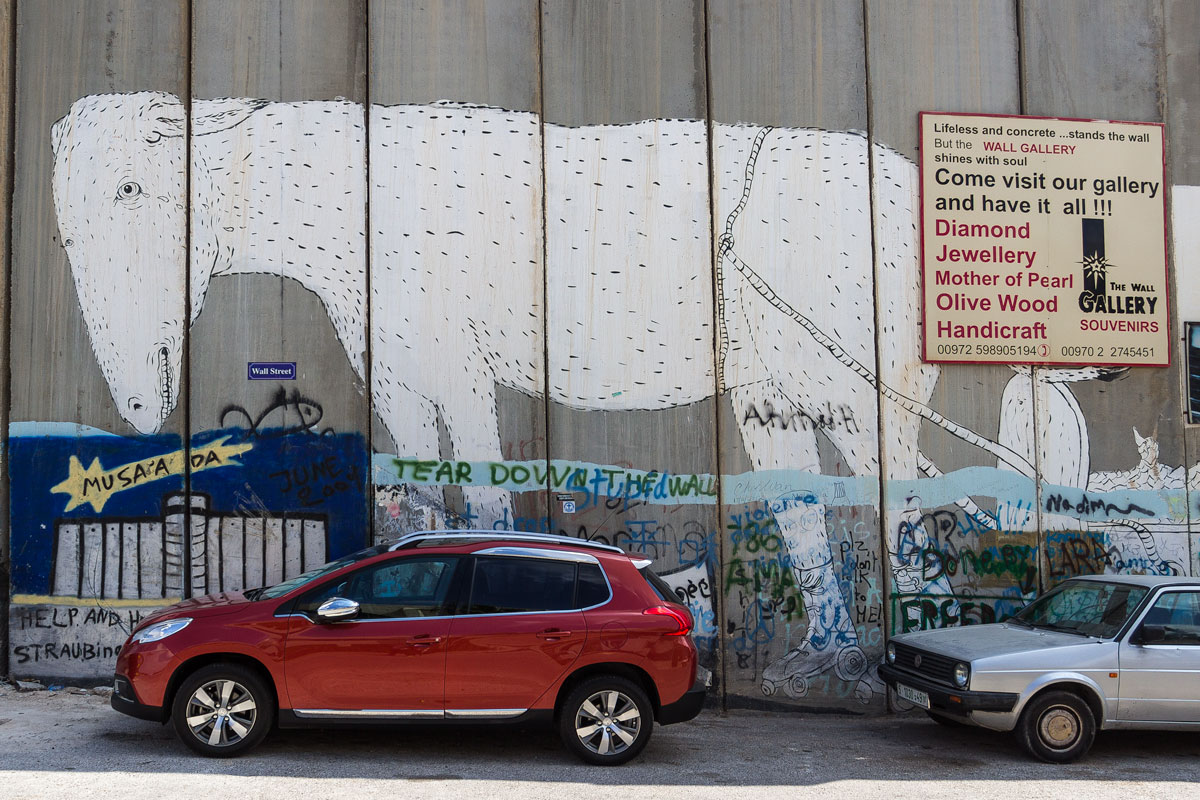
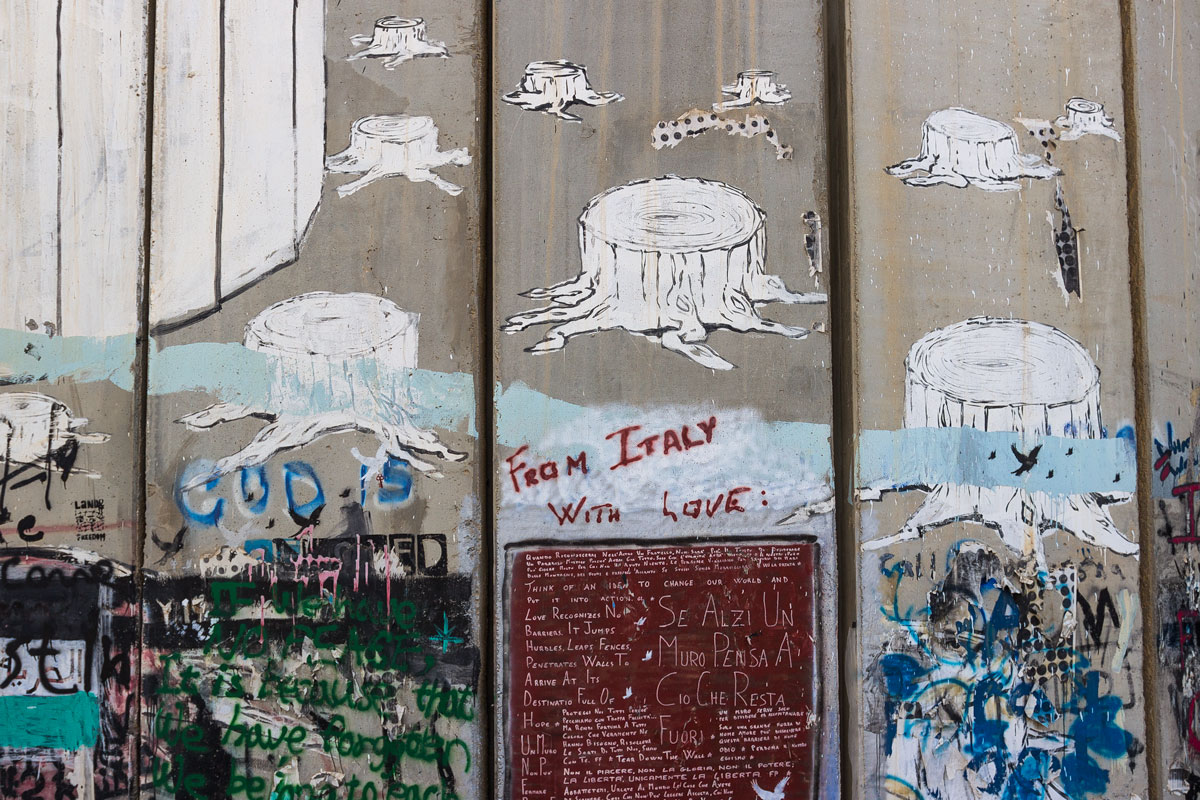
The wall looks as if it’s from a movie about Judgment Day.
Around the next corner is a huge portrait of Leila Khaled, who became famous for being involved in the first-ever airplane hijacking in history. It seems that Leila’s exploits were centered around hijackings, detonating empty planes, and hostage exchanges. Thankfully, there were no fatalities.
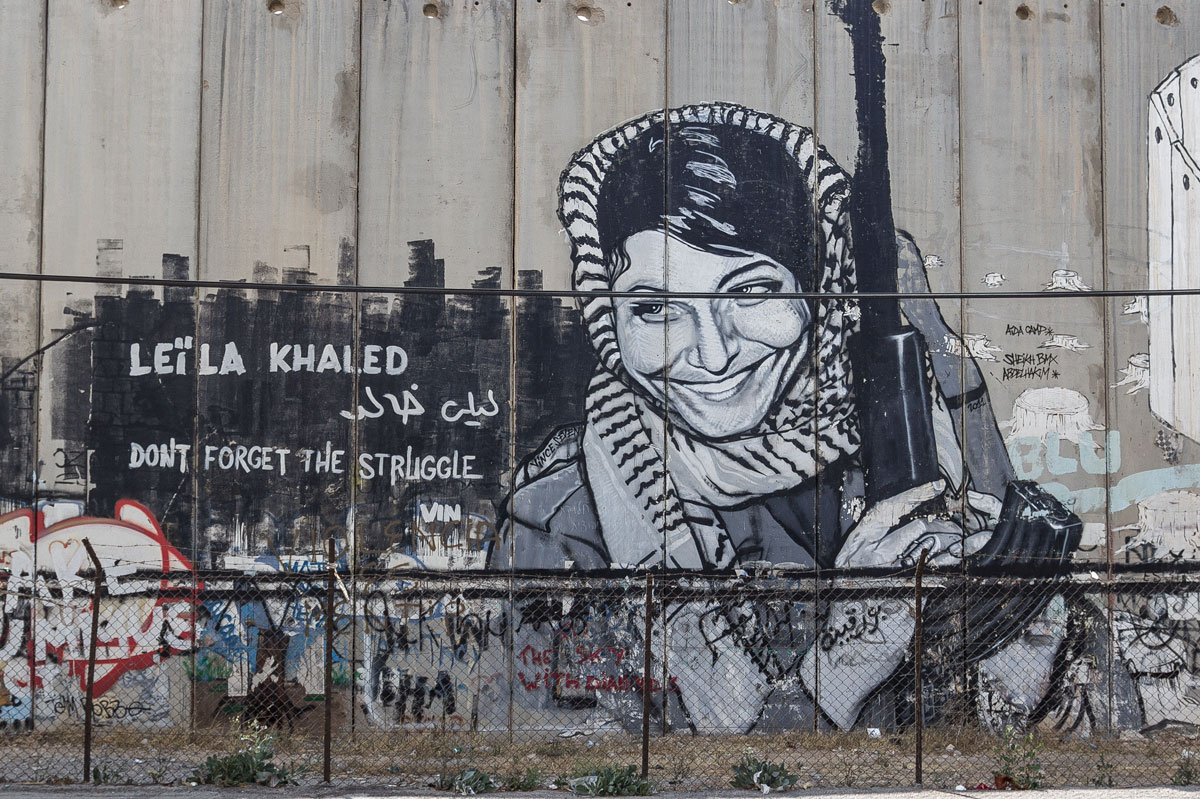
Superb graffiti: “Make hummus, not walls.”
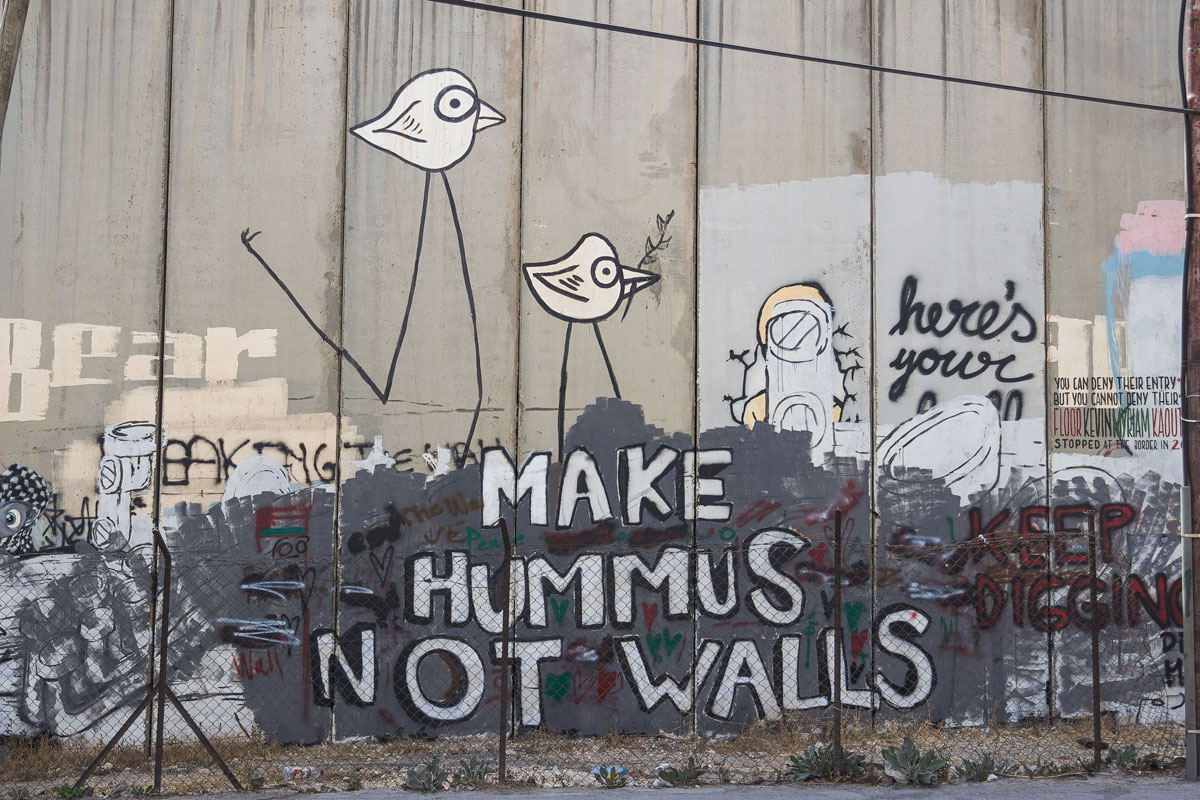
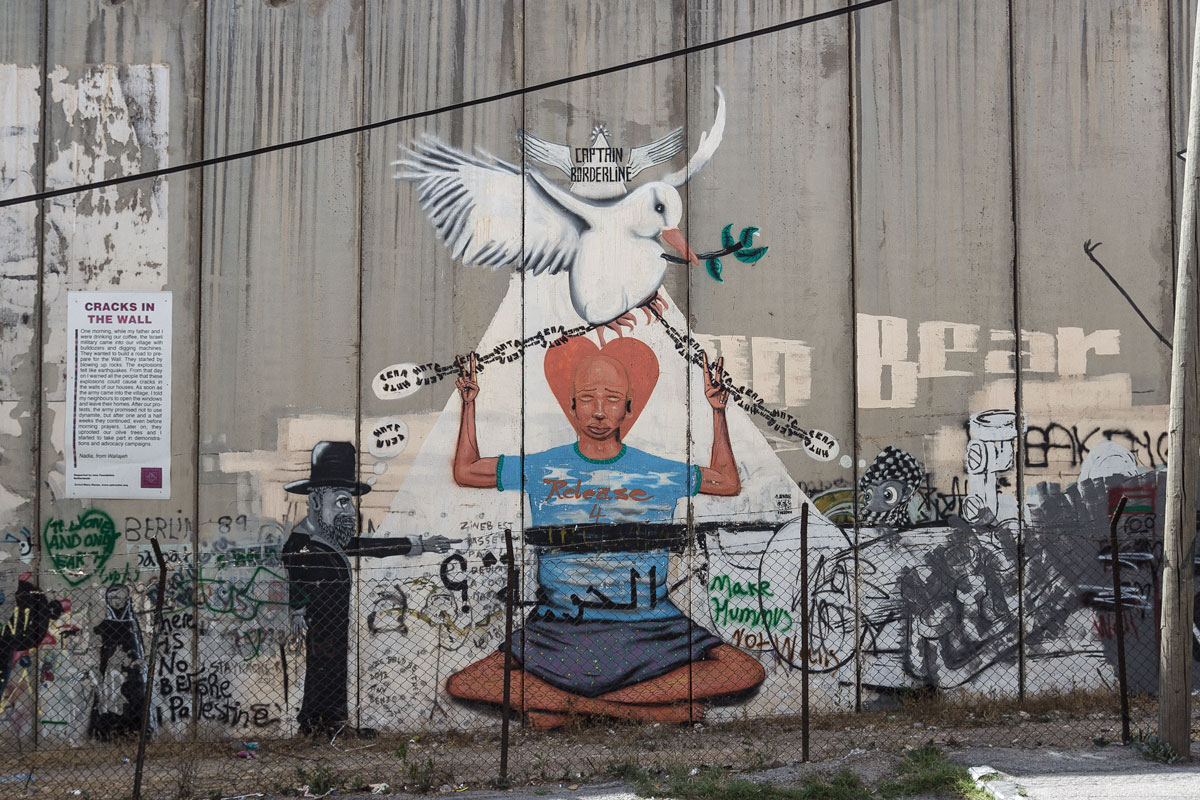

Judging by the map, we have deviated from the path to the Rahil’s tomb — naturally, as the wall took a turn at Anastas’ house. Now we need to keep to the right. And soon the wall makes the necessary right turn, revealing another spacious block with a huge number of drawings.
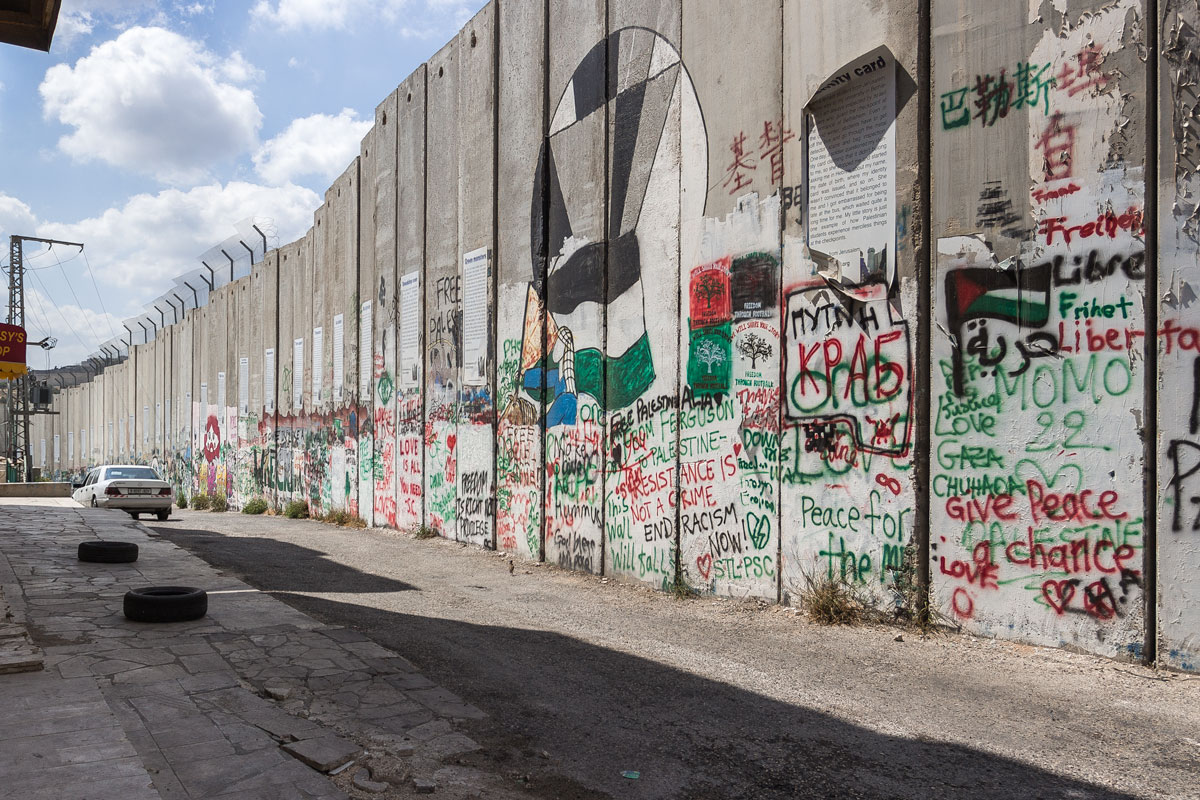
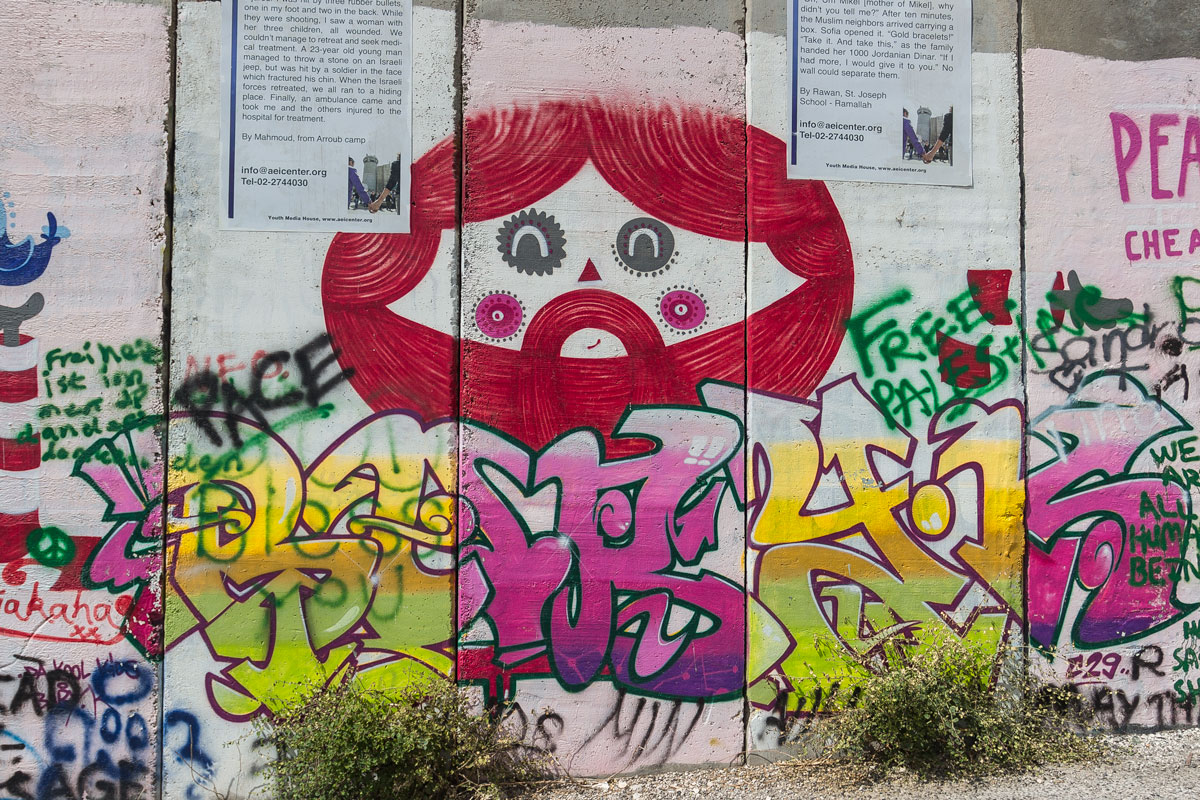
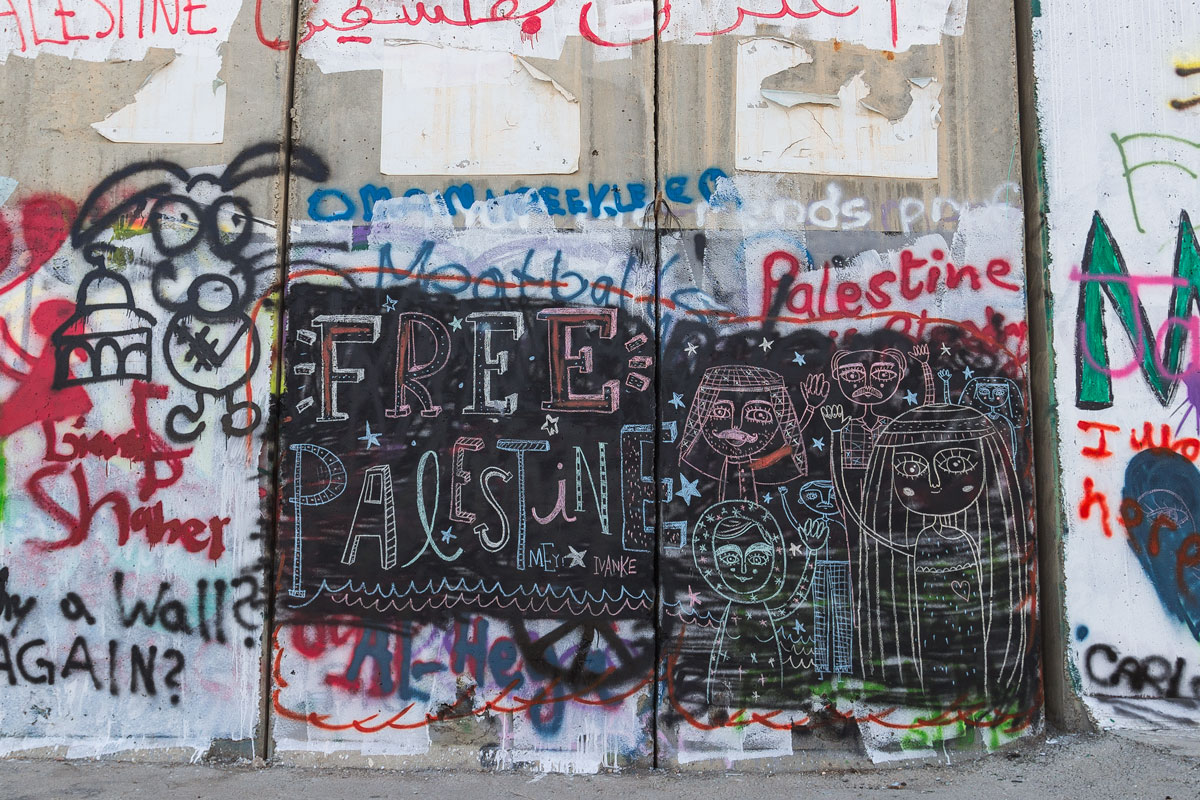
In this place, the first Banksy graffiti is found: a girl with balloons.
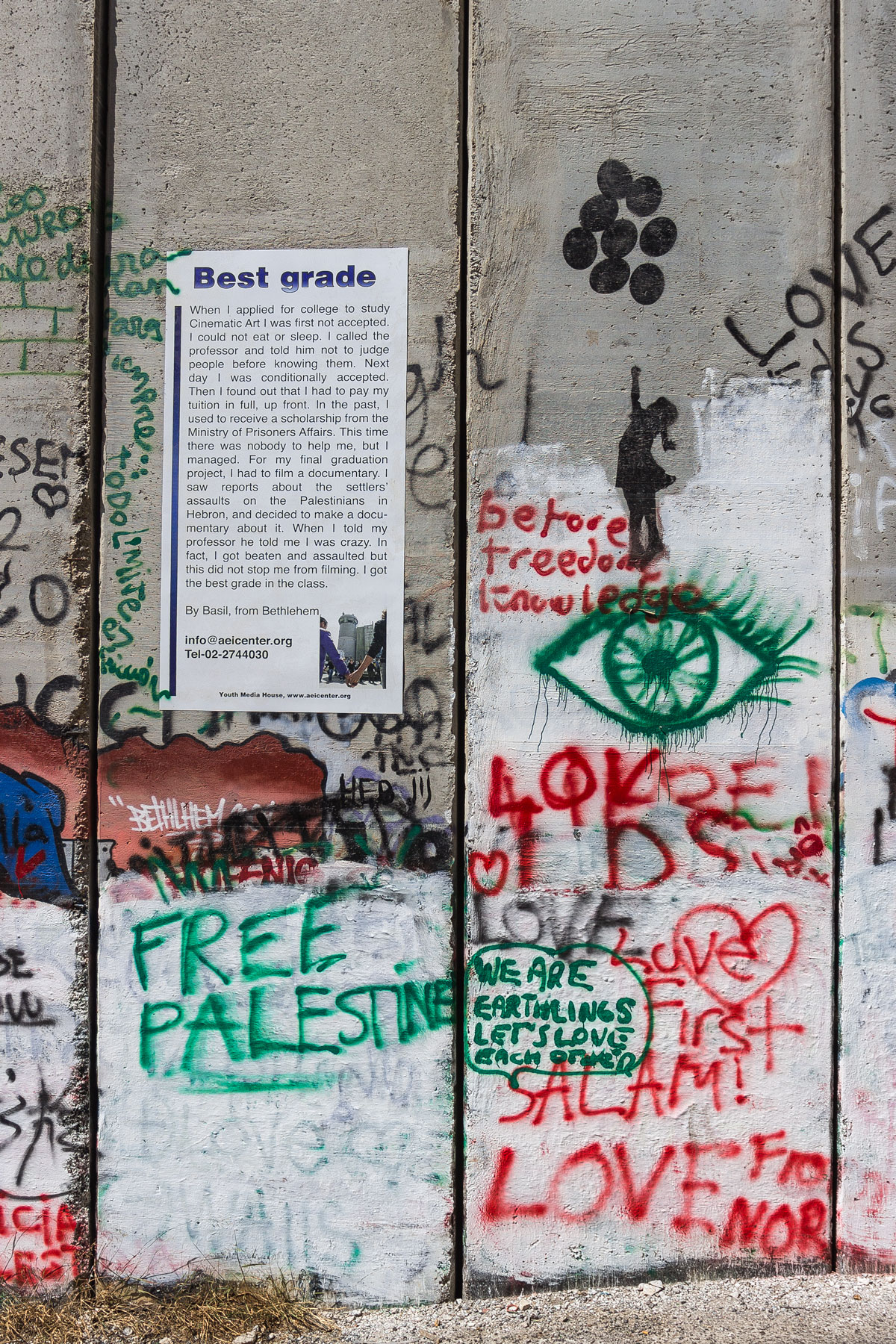
Right in front of the drawing, of course, there is a souvenir shop entirely dedicated to the artist’s works — Palestinians earn however they can and with whatever they can. There are even tours where taxi drivers take tourists to the best graffiti spots.

And the wall leads further and further with its loops. The marker on the map is floating somewhere nearby. It constantly feels like you’re almost there, but no: another curve of the wall takes you off in another direction. And every time you wonder: what’s there, around the next turn?
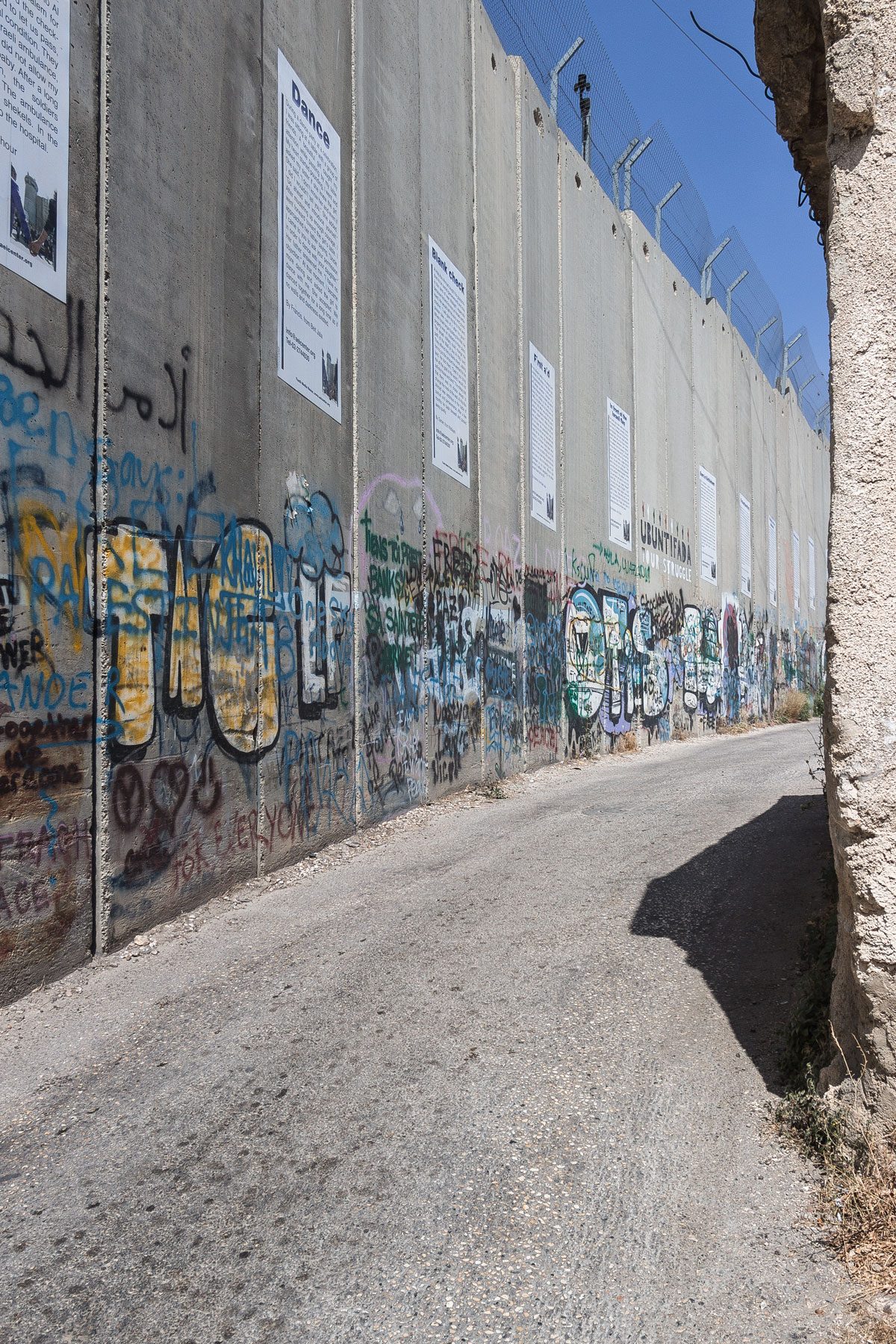
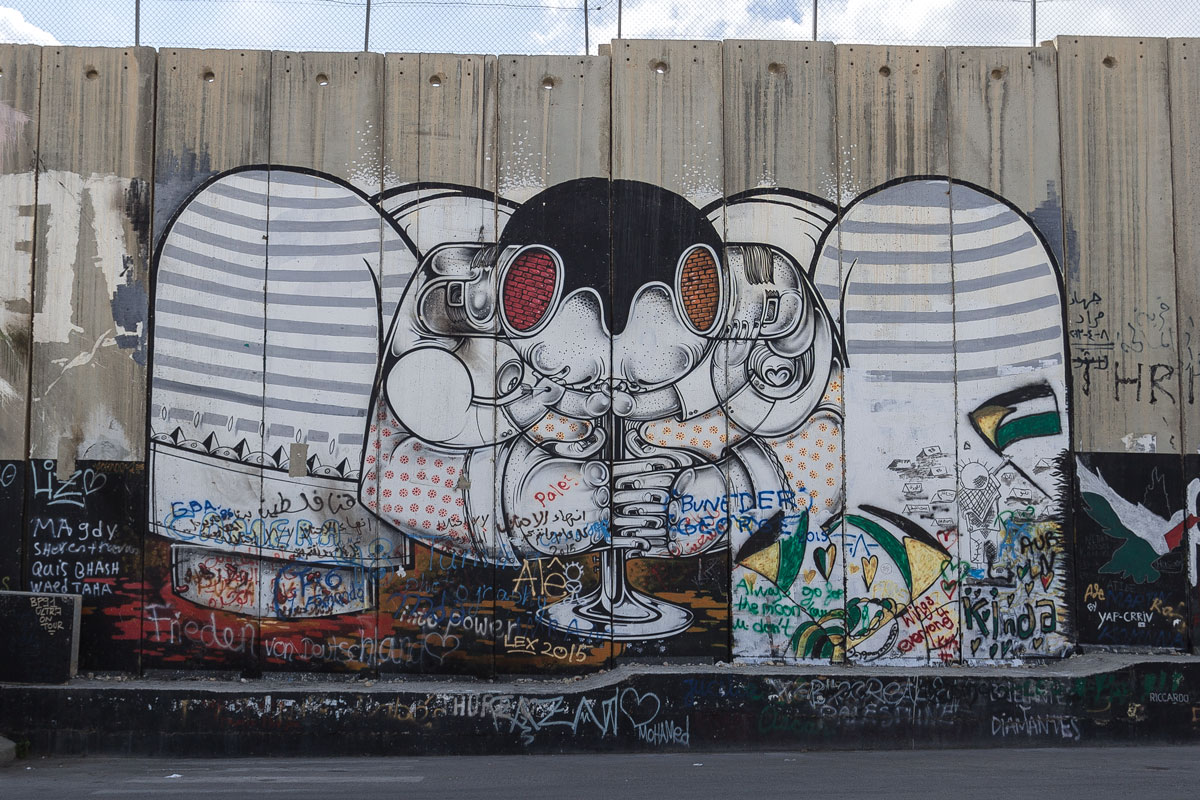
Eventually, the wall takes a sharp angle, meeting a bustling road with completely normal vehicular traffic. Bethlehem gradually begins. The usual urban development becomes visible, but if you look back, there stands that concrete citadel again, with an observation tower, covered in soot, and a massive steel gate.
And the first destination — the ill-fated tomb of Rachel — remains unattained. It is somewhere here, but it’s impossible to tell where. Just ten minutes ago, it was ahead, and now the compass points backward. On the map provided by Claire, the tomb is marked on the other side, which means we need to make a little detour around the wall.
In front of the gate stands a fragment of a barricade with a drawing depicting a soldier threatening a teenager with a weapon. The gate is covered in inscriptions saying, “Pope, we need peace in Palestine.” Attached nearby is a photograph of the Pope, leaning against the wall.
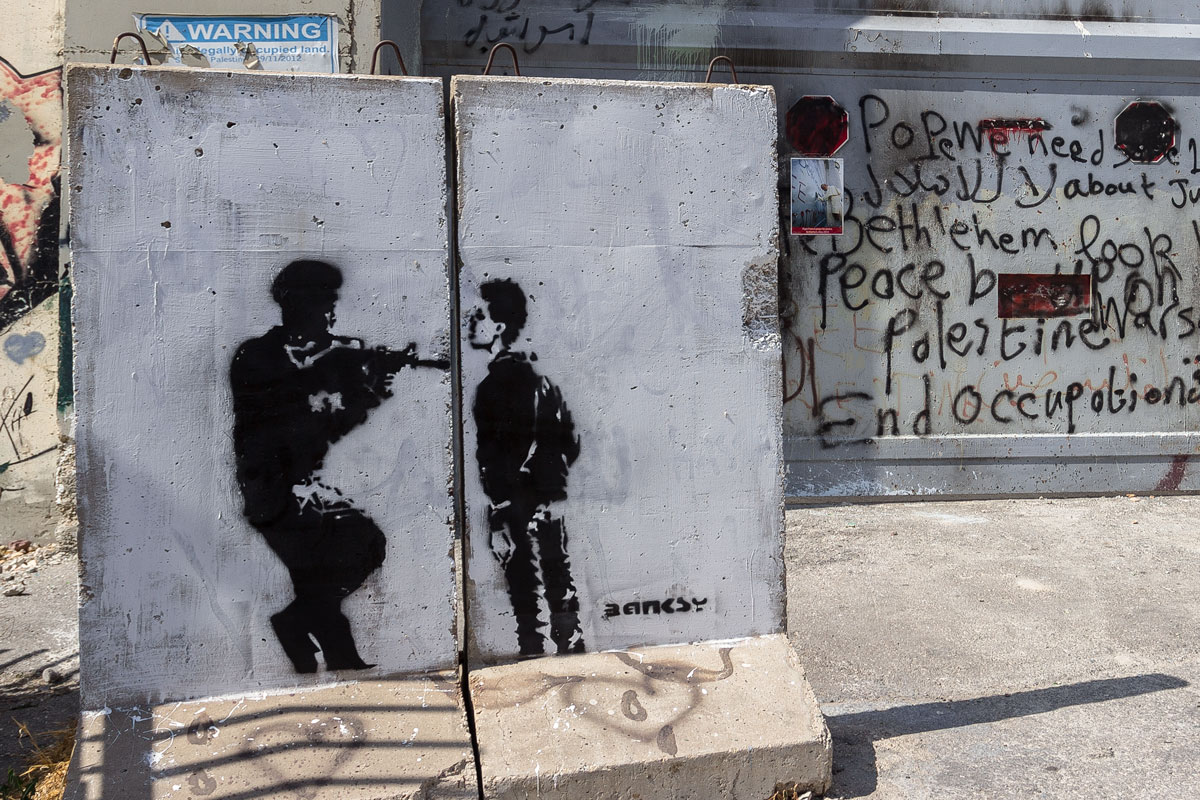
To the left of the gate, a small passage is discovered between the wall and the fence. Once again, one has to walk along this tiresome wall, through some completely abandoned places. Something is clearly going wrong. But the compass on the navigator points exactly there, just like the mark on Anastas’ business card.
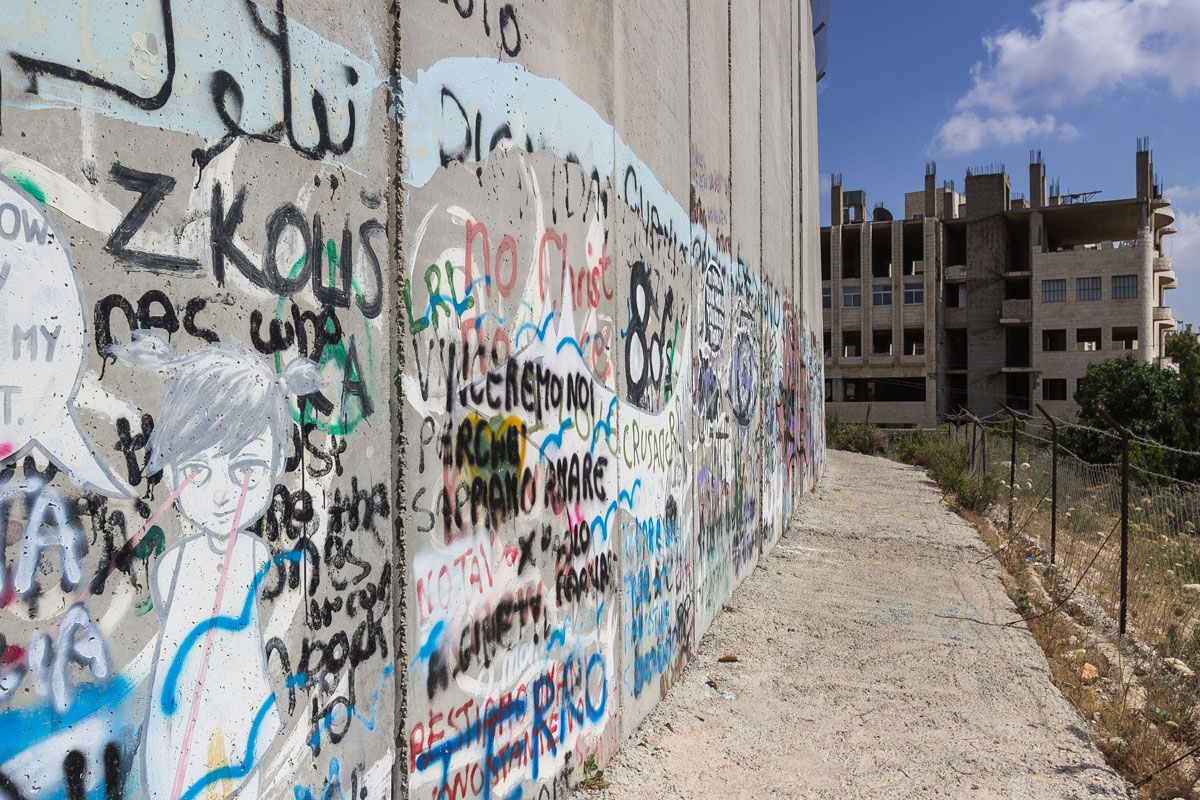
The wall continues its graphic narrative: “To build your world your killed theirs.”
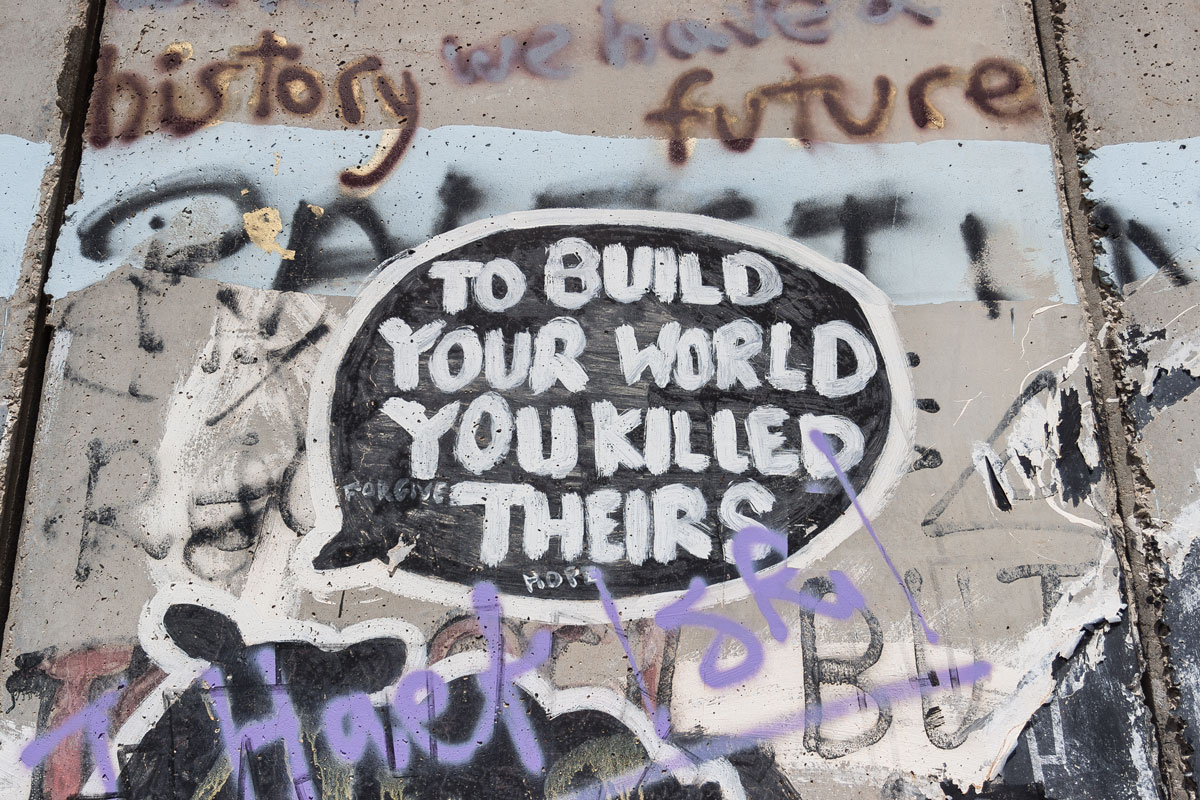
“When I grow up, I’ll blow this up with my laser sight.”
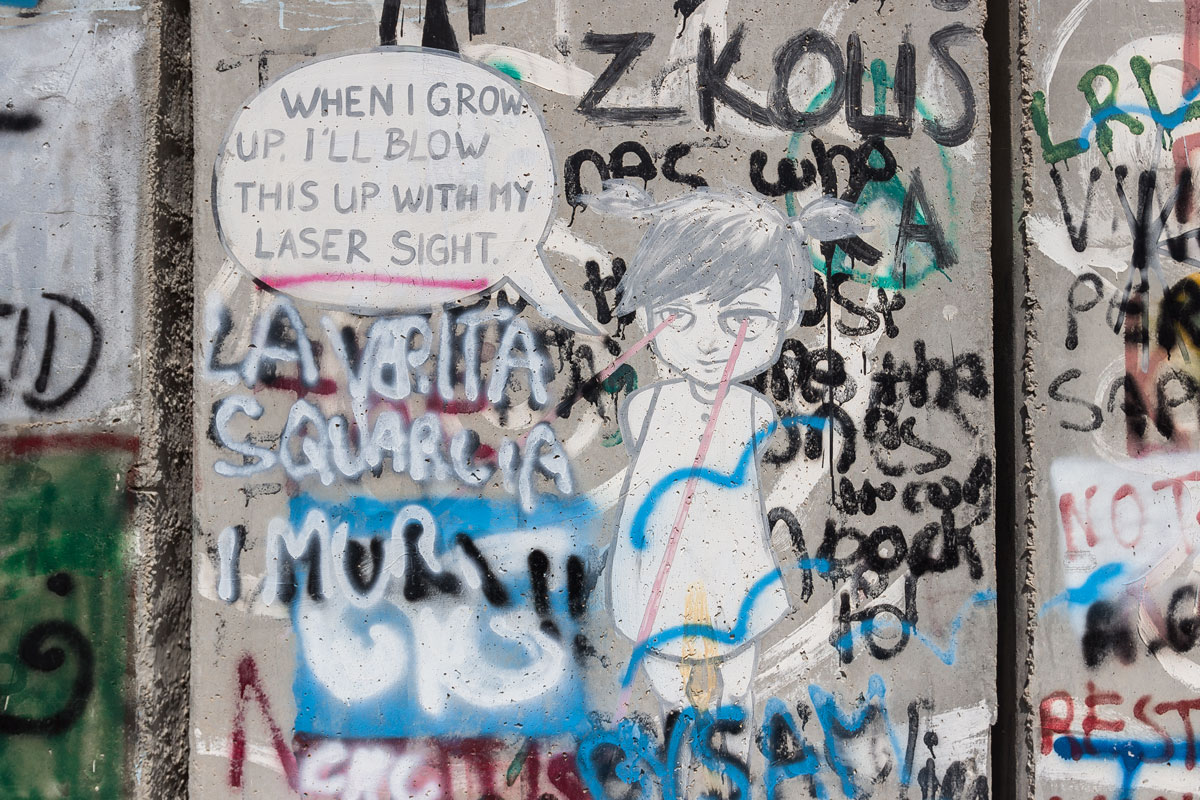
Finally, this path reaches its culmination. The wall comes to an end at the old Muslim cemetery, and there is no further normal road ahead.
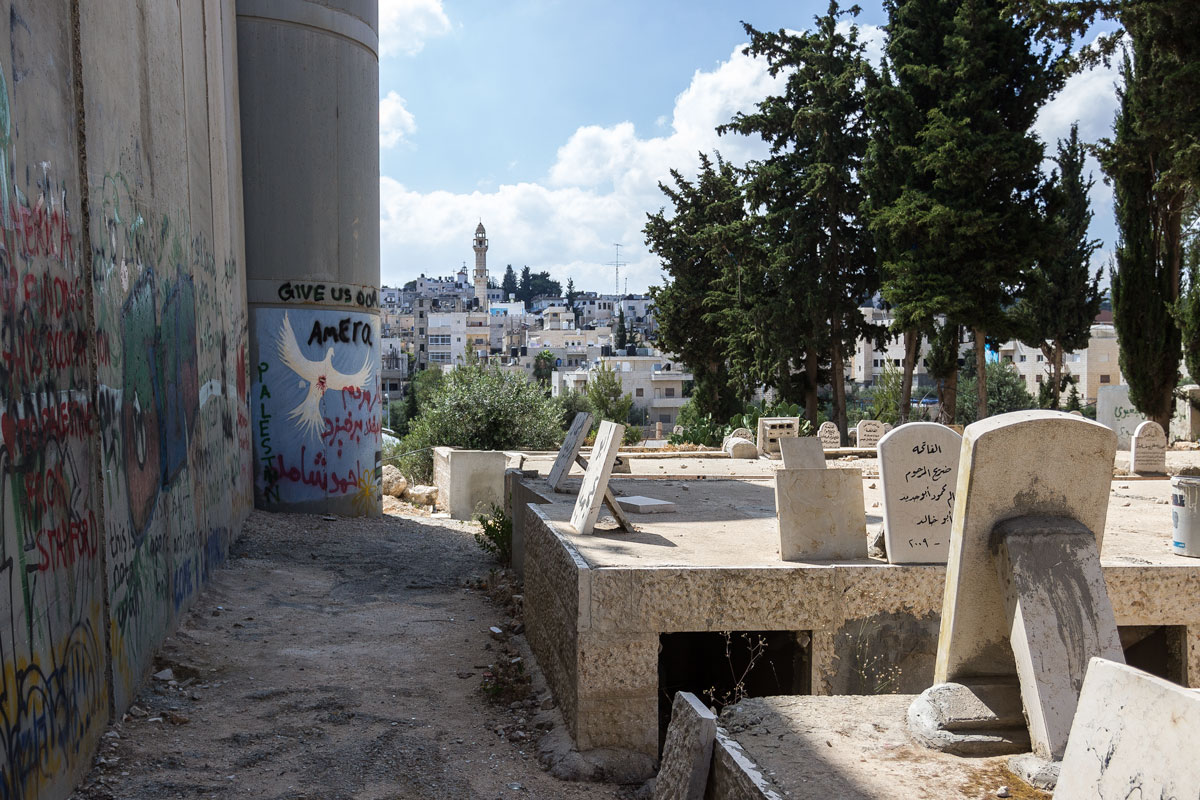
The cemetery is not the most pleasant place. But if there’s a cemetery here, then Rachel’s tomb should be somewhere among the graves. It all adds up. Except for one thing: there is no trace of any tomb here, only ordinary Arabic tombstones.
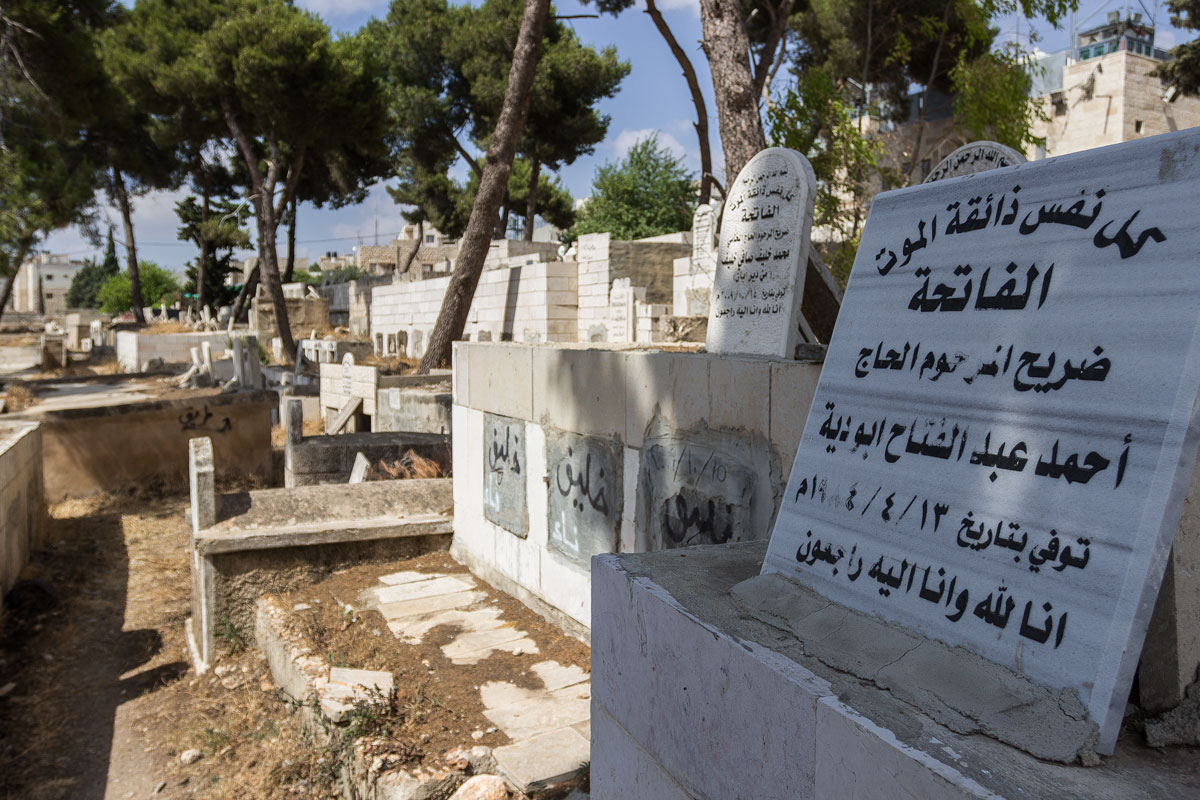
And the compass? The compass now points straight at the wall. There must be a passage somewhere, or how... After all, the tomb is beyond the wall. But it seems we haven’t come across a single open door in it throughout the long journey. And now the tomb is so close, literally ten meters away, but the wall blocks the way.
In the gaps between the blocks, you can see some junk, grass, and a trampoline. There is nothing to climb higher on, and only a house with an Israeli flag is visible beyond the wall.
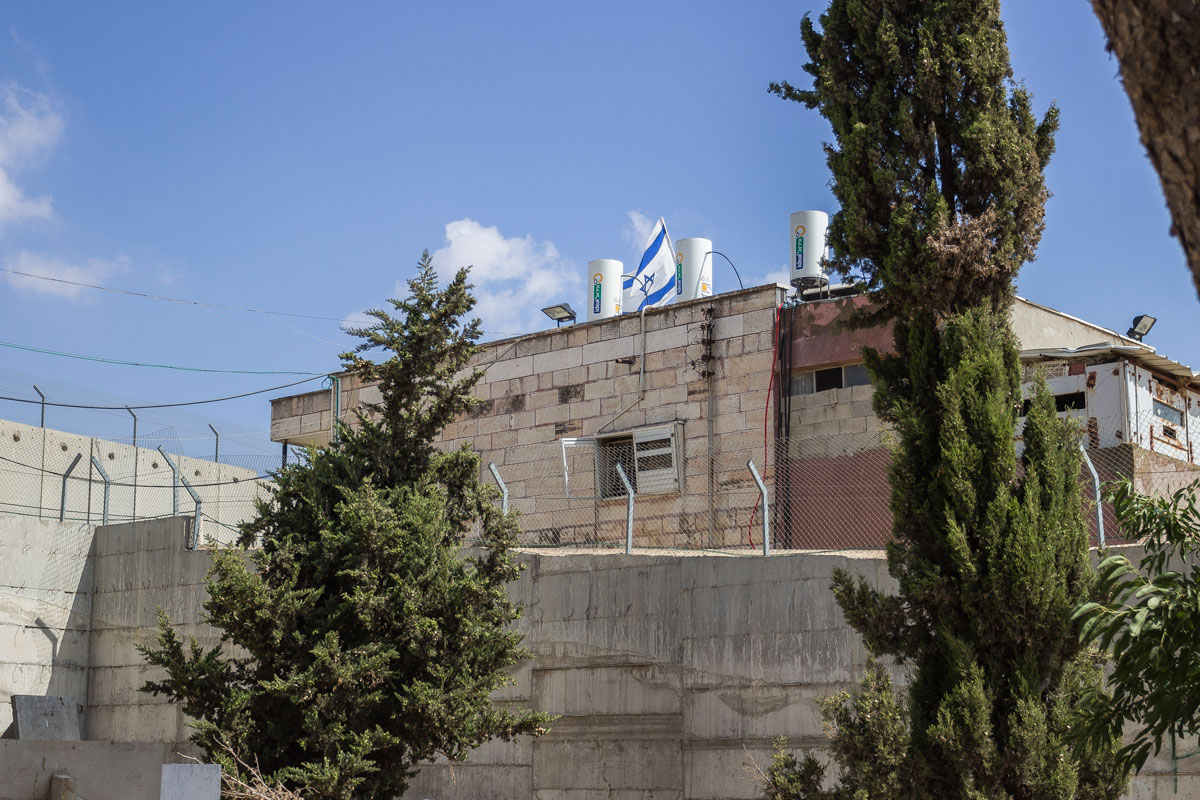
How could this be? Where is the tomb? And by the way, this is Palestine, so what is an Israeli flag doing here? I look at the map again — the navigator stubbornly points to the wall. I look at Anastas’ business card and at how the wall makes its intricate loop: what a strange shape it has... Claire’s words come to mind. She seemed to have started explaining something towards the end, about why the wall was built this way... She was talking about Rachel’s tomb, precisely... But wait, how can this be?!
Only at this moment comes the understanding of the Bethlehem’s tragedy.
Rachel’s tomb is not beyond the wall or on the other side of the wall. It is inside the wall. Enclosed on all sides by seven-meter concrete slabs, with all passages through them sealed off by steel gates and monitored from observation towers.
All this intricate curve, the winding wall that was supposed to encircle the city’s border, instead, like a thorn, infiltrates Bethlehem ruthlessly, passing through the cemetery and residential houses, slicing neighborhoods in half, and dividing families with a kilometer-long barrier, with the sole purpose of growing into a concrete bubble that surrounds its one and only target — the tomb of Rachel.
Around is Palestine. And beyond the wall is a patch of land the size of a summer cottage — a piece of Israel.
When Israel built the wall, or as it is also called, the separation barrier, it took care not only to protect against terrorist attacks from Palestine but also to ensure that Jews could freely travel to their main holy sites. Among them was the tomb of the matriarch Rachel, located near the borders of Bethlehem. Israel constructed a five-meter-wide access road, flanked by a massive wall on both sides, and surrounded the tomb itself with a barrier while also building a military base nearby.
When the special armored bus from Jerusalem reaches the “Bethlehem Checkpoint 300” stop — the steel gates in the wall, which the reader saw at the very beginning of the story, open and allow it inside, where it travels for a few minutes surrounded by two walls.
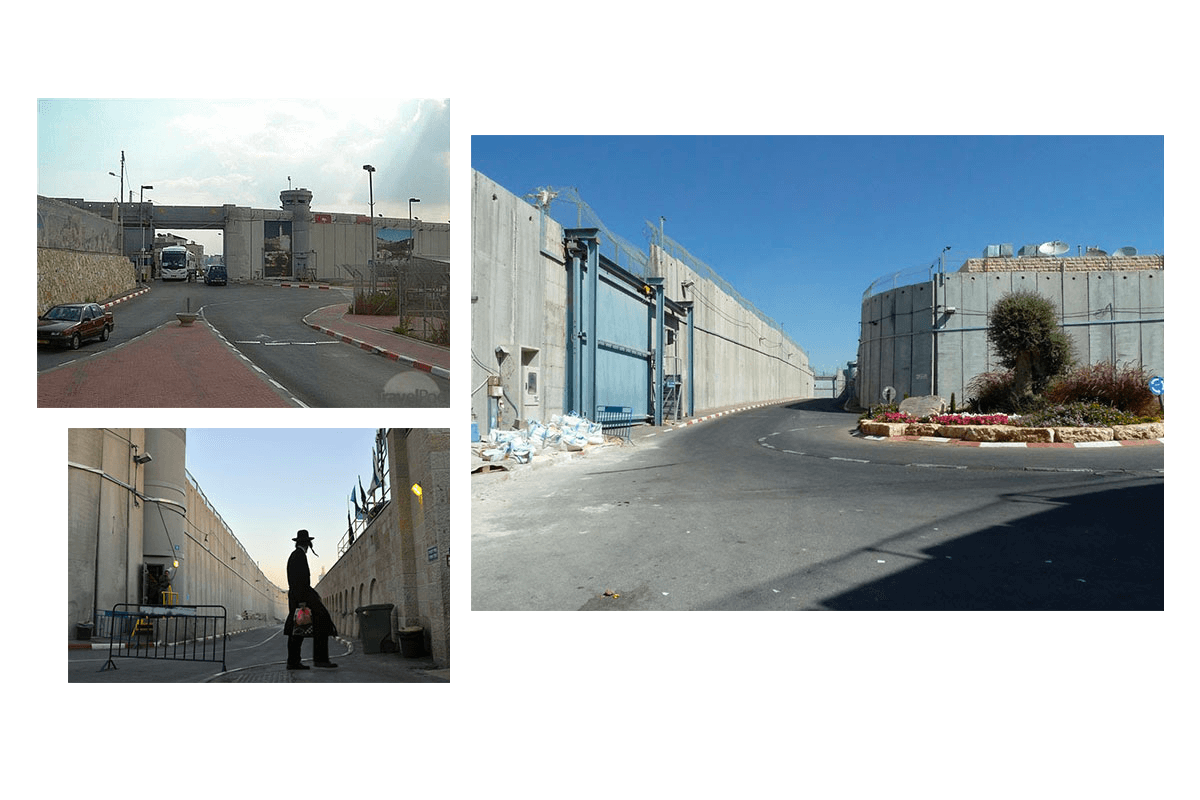
Anyone who wishes, especially if they are traveling from Israel, can drive to the tomb almost any day. But from Bethlehem, it seems that you can only reach it once a year, if it is still possible.
Previously, the tomb stood by the old Hebron road. It was a small structure with a white dome.

The historical structure has survived to this day, but it is surrounded by a wall on all sides — even the dome is not visible from the ground.
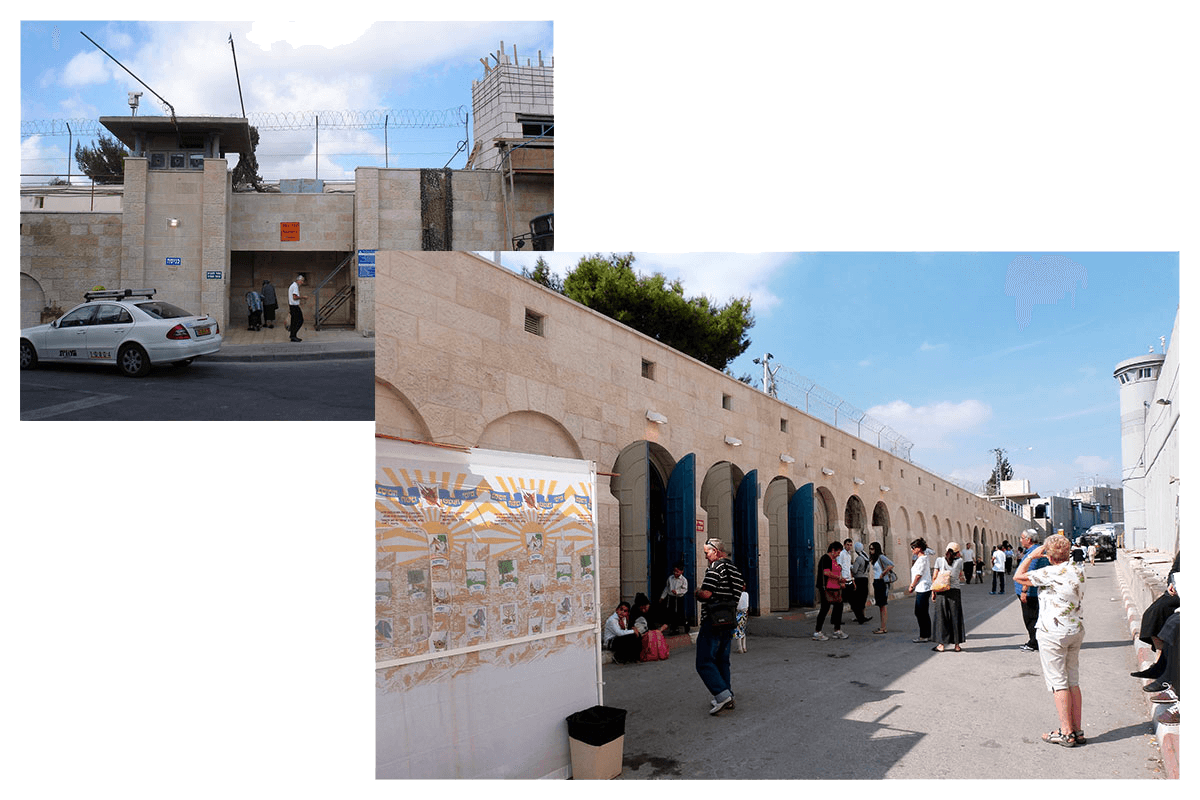
Here is how this place looks from above. The tomb’s dome peeks out from behind the wall in the left part of the photograph. Leila Khalid’s graffiti can be seen on the right. And in the middle, the roof of the Anastas family’s house is visible.

This is how the Israeli wall disfigured Bethlehem. But what was the cause? Are Jews really so cynical and cruel that they are willing to destroy half a city for the sake of some religious shrine?
We have already heard the Palestinian version from Claire. Now it’s worth listening to the opposite point of view. And to be objective, we will even listen to the opinion of not an Israeli, but a Palestinian. Moreover, the opinion of a Palestinian who has a direct connection to the wall, to the same extent as Claire does. We will hear the opinion of her daughter, Kristi Anastas.
Kristi is the same child who left for school early in the morning and could barely make it home in the evening because a wall had grown in front of her house. A few years ago, Kristi left Palestine and enrolled in a law faculty at one of the universities in the United Kingdom. Here’s what she says:
An exceptional case: that very child who grew up in this ill-fated house and experienced it all, matured, and obtained a legal education in Britain, now says that they themselves would build this wall. It is difficult to imagine the shock of the Anastas family when they heard this from their daughter. Now they claim that Kristi’s mind has been manipulated and forced to say such things.
They chose the wrong wall to wail at.
⁂
Of course, to tell the entire story of this conflict, a few books would not be enough. And we don’t have that much time, with Bethlehem still ahead, about which the story has not even begun. The real, vibrant Bethlehem begins where the wall ends. On the wall, there is a sign that says, “Welcome to Palestine. Welcome to Bethlehem,” along with another artwork by Banksy.
And right next to that, there is a girl frisking a soldier. Around her, Arabs have cleverly set up a shop and a travel agency.
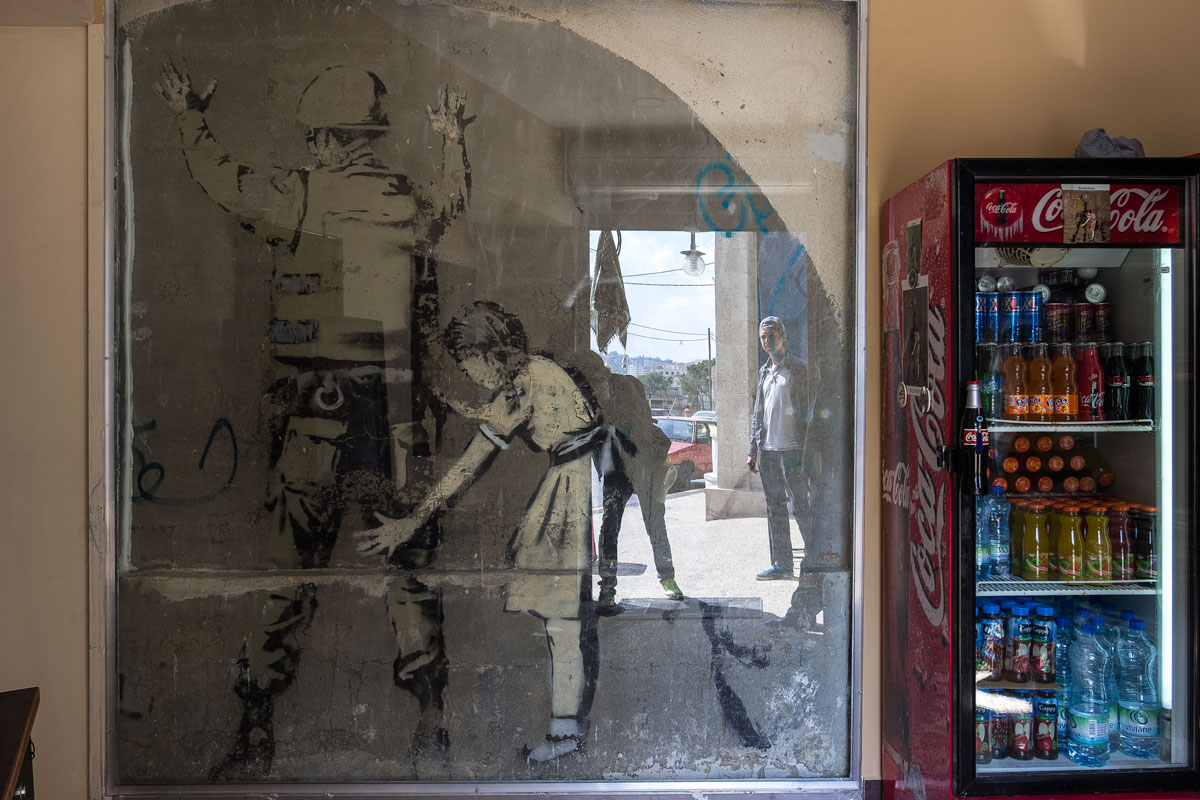
On the other side of the wall, there is a bustling road, and on the horizon, numerous residential houses can be seen.
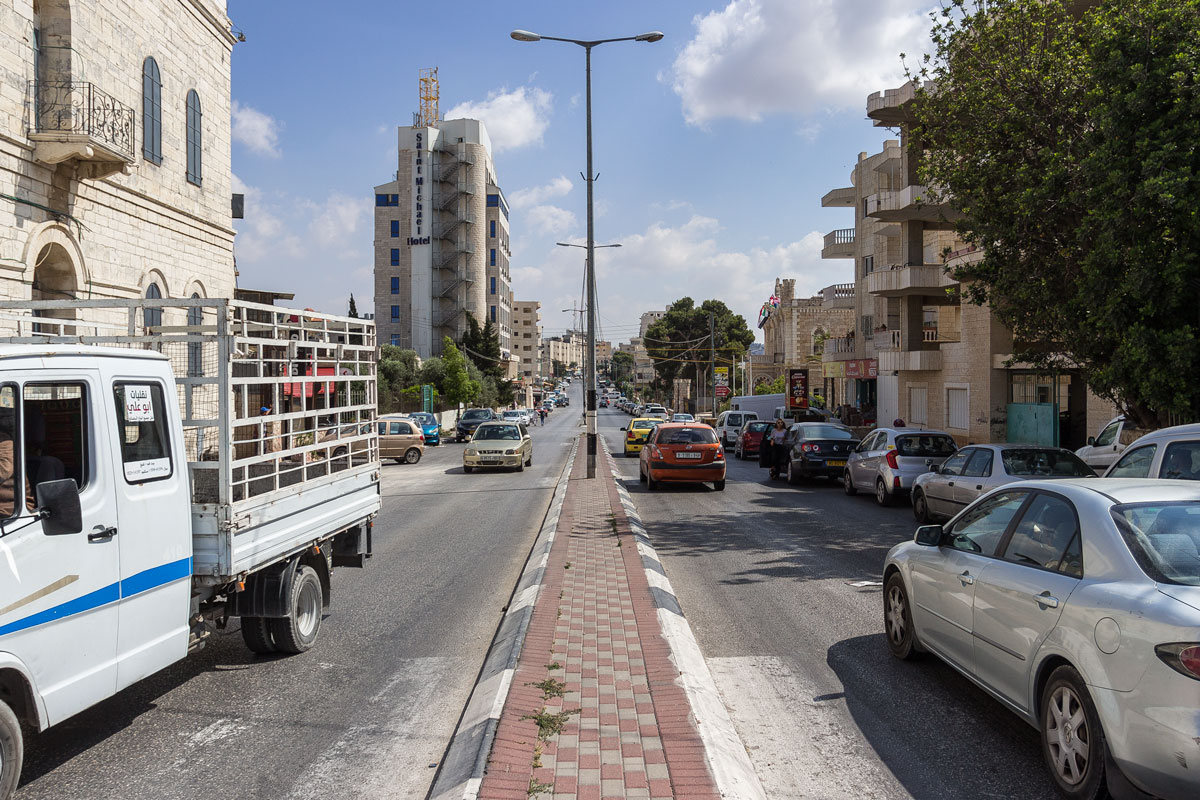
The streets of Bethlehem are somewhat similar to Tel Aviv or Jerusalem, but they are comparatively poorer.
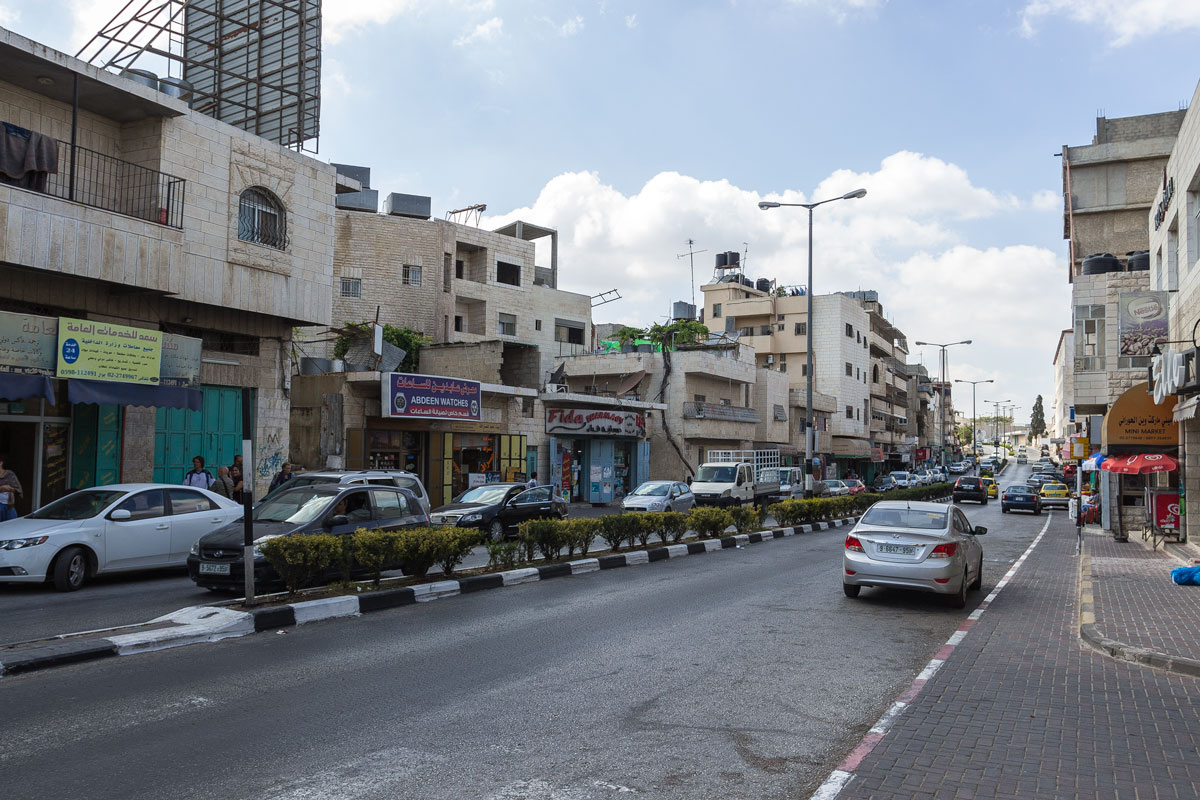
Homes.

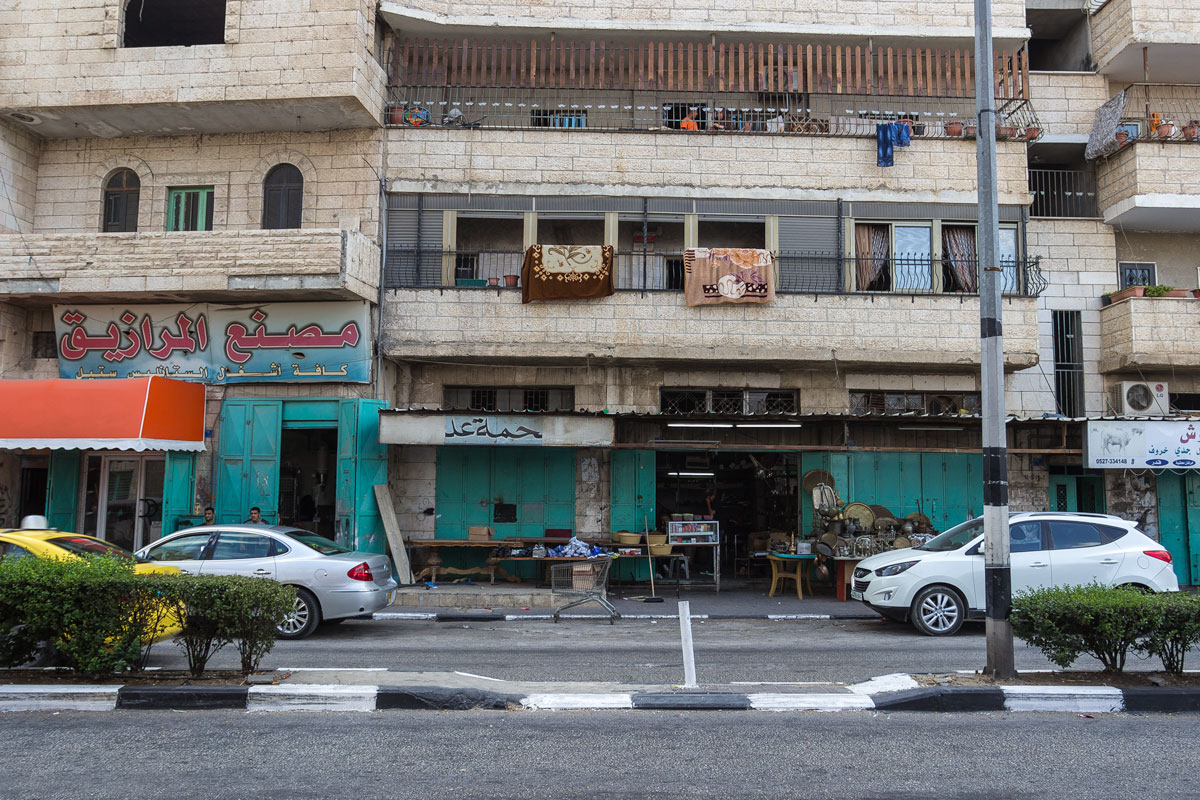
Closer to the center, Bethlehem stretches on a small elevation.

Bar. Alcohol is permitted in Palestine and is typically served in restaurants and bars in major cities like Bethlehem.
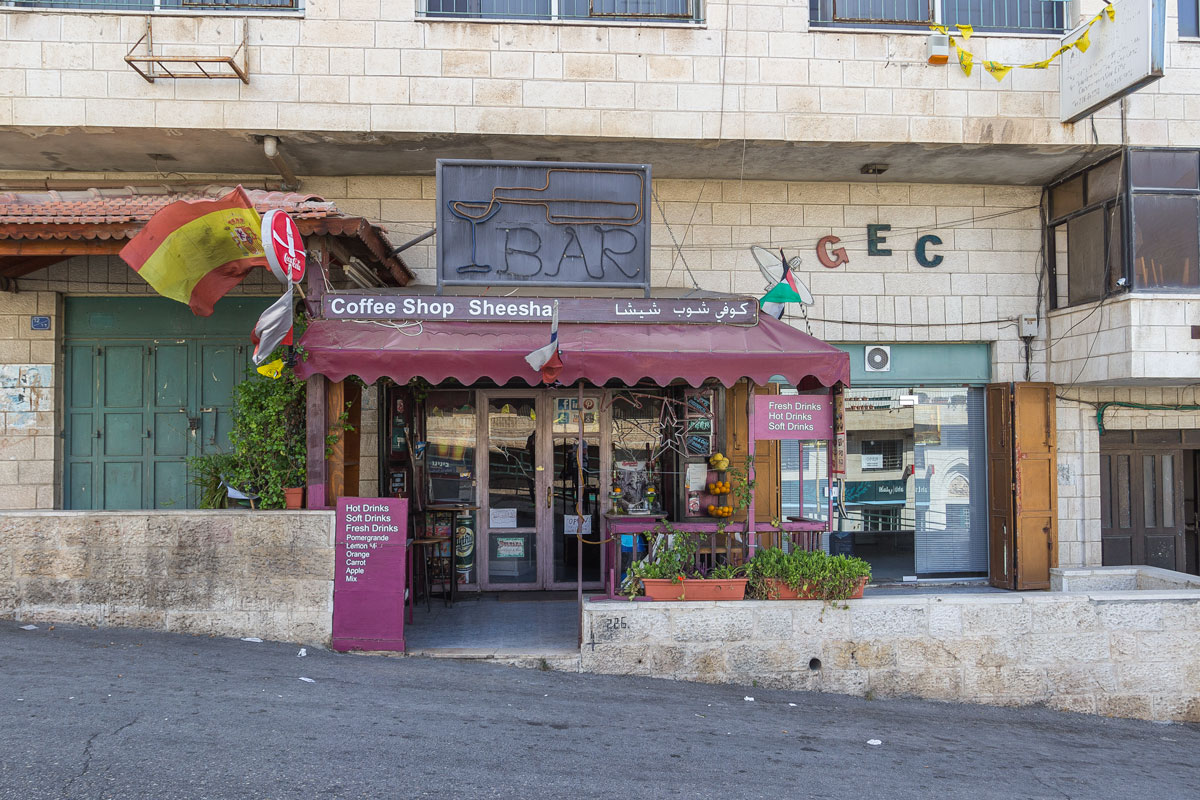
Christmas tree.

In the center of Bethlehem, it is very clean and well-maintained, almost like in Jerusalem.
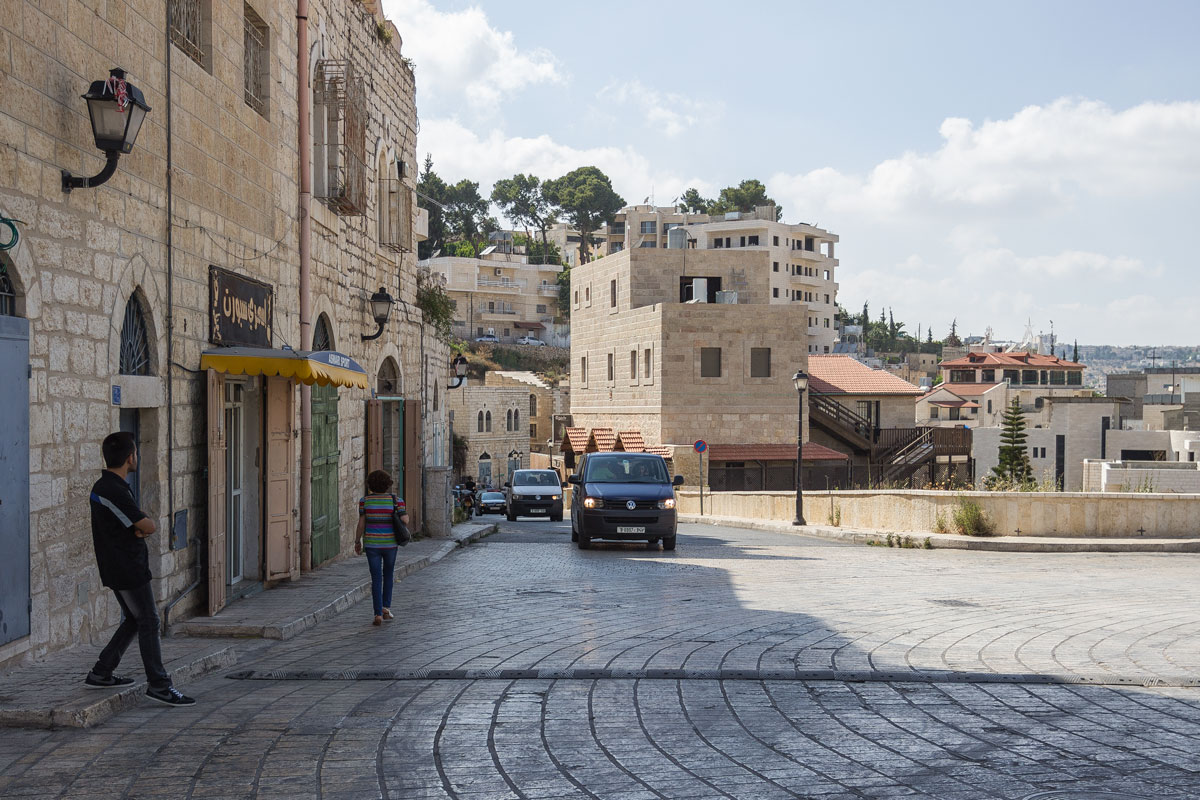
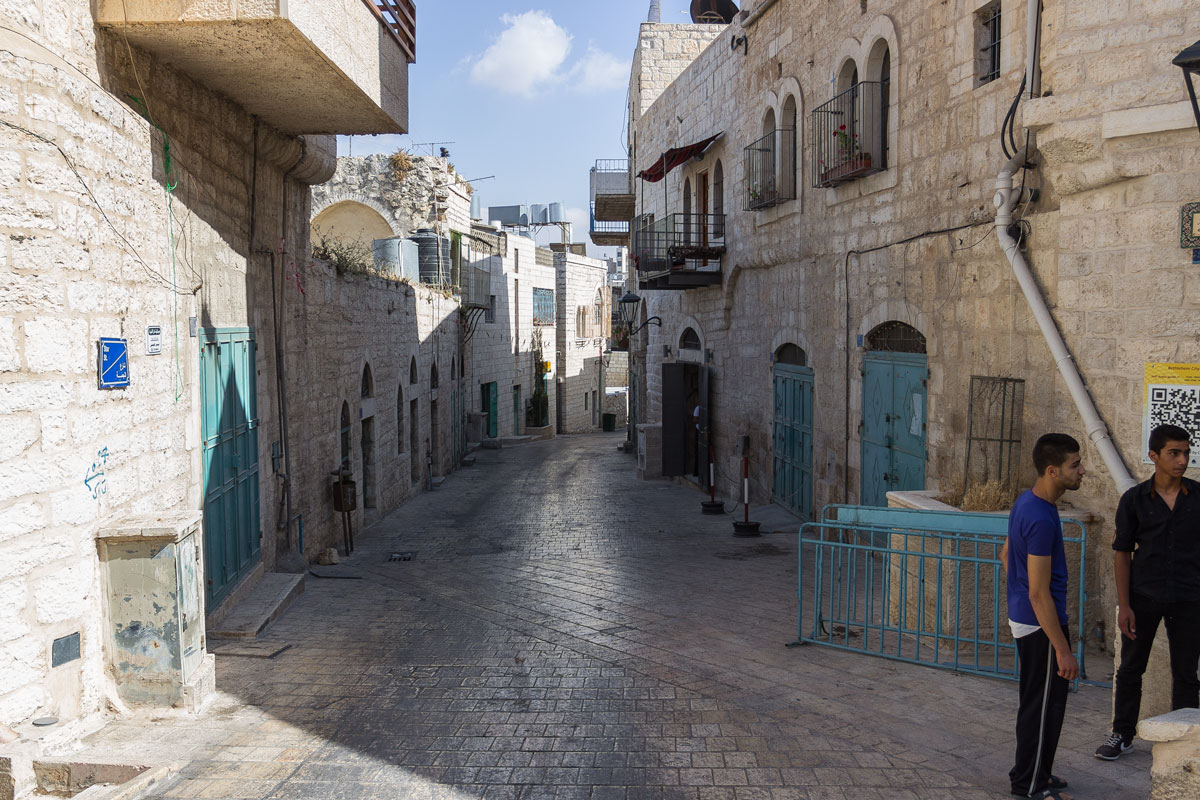
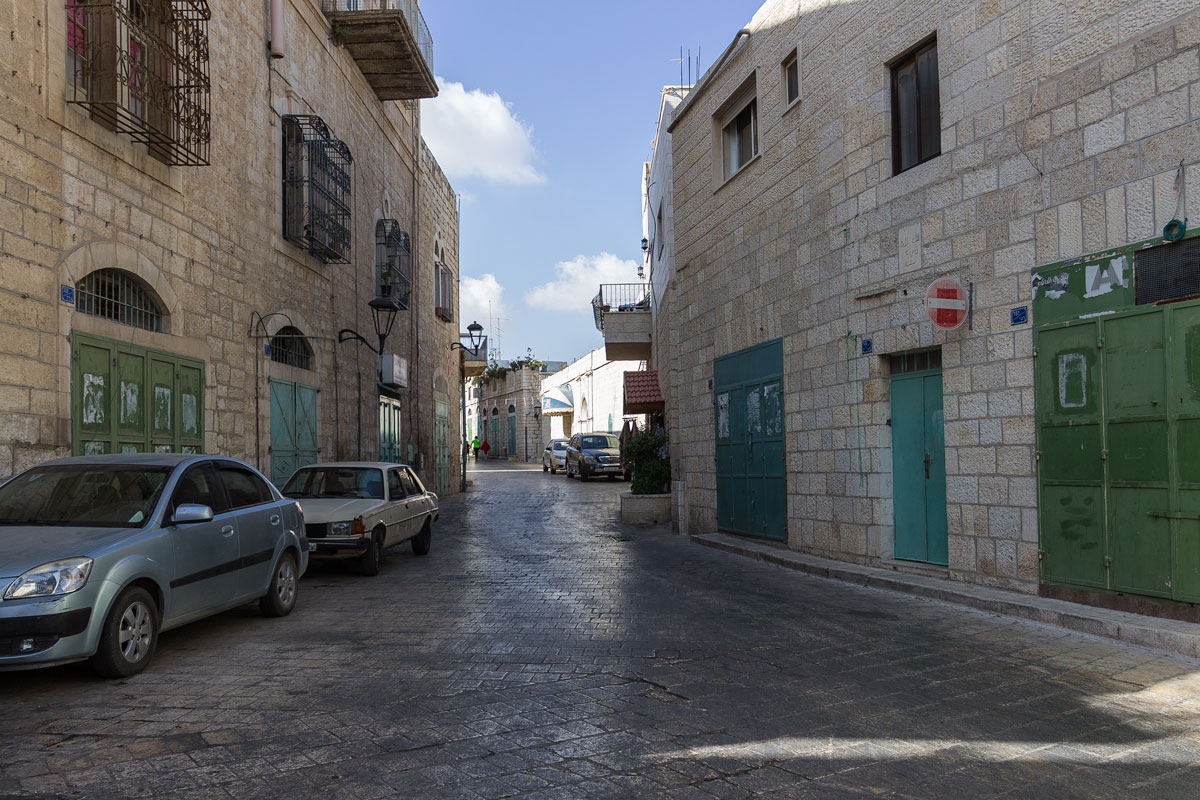
The streets are completely empty. Each house has wide doors and windows, but everything is closed as if no one lives here.
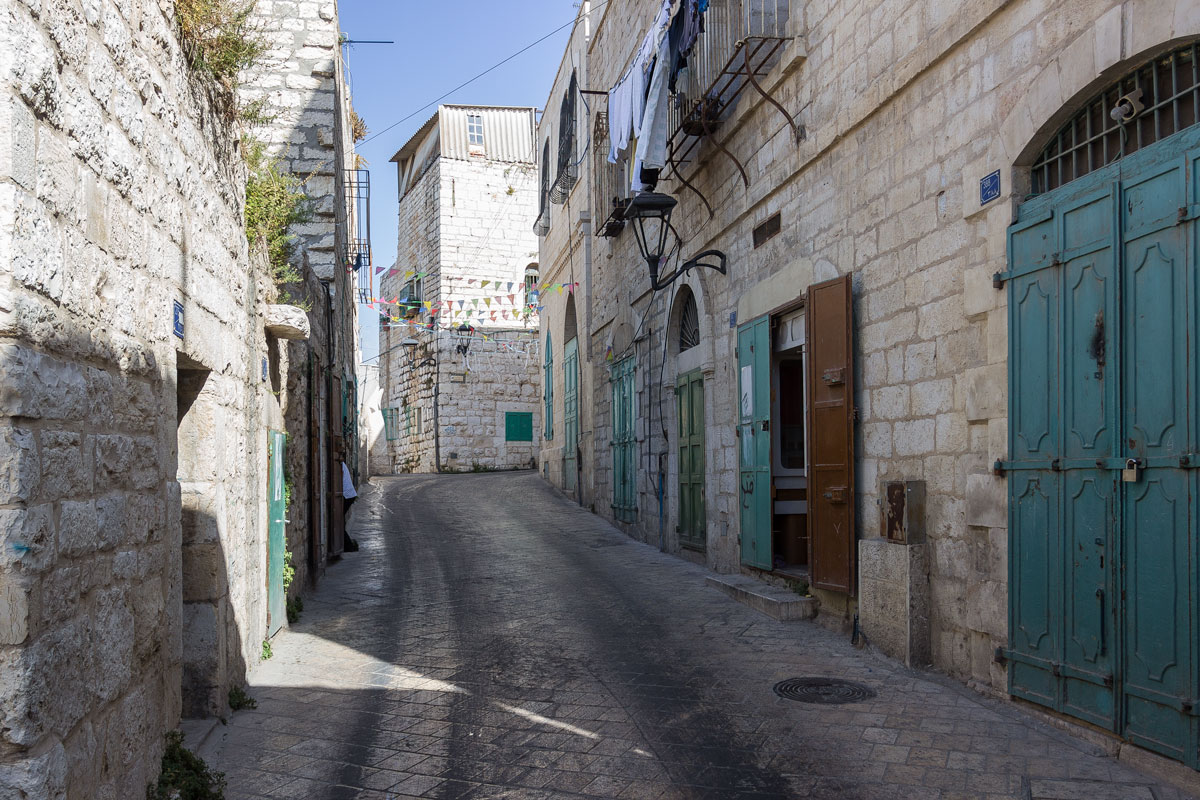
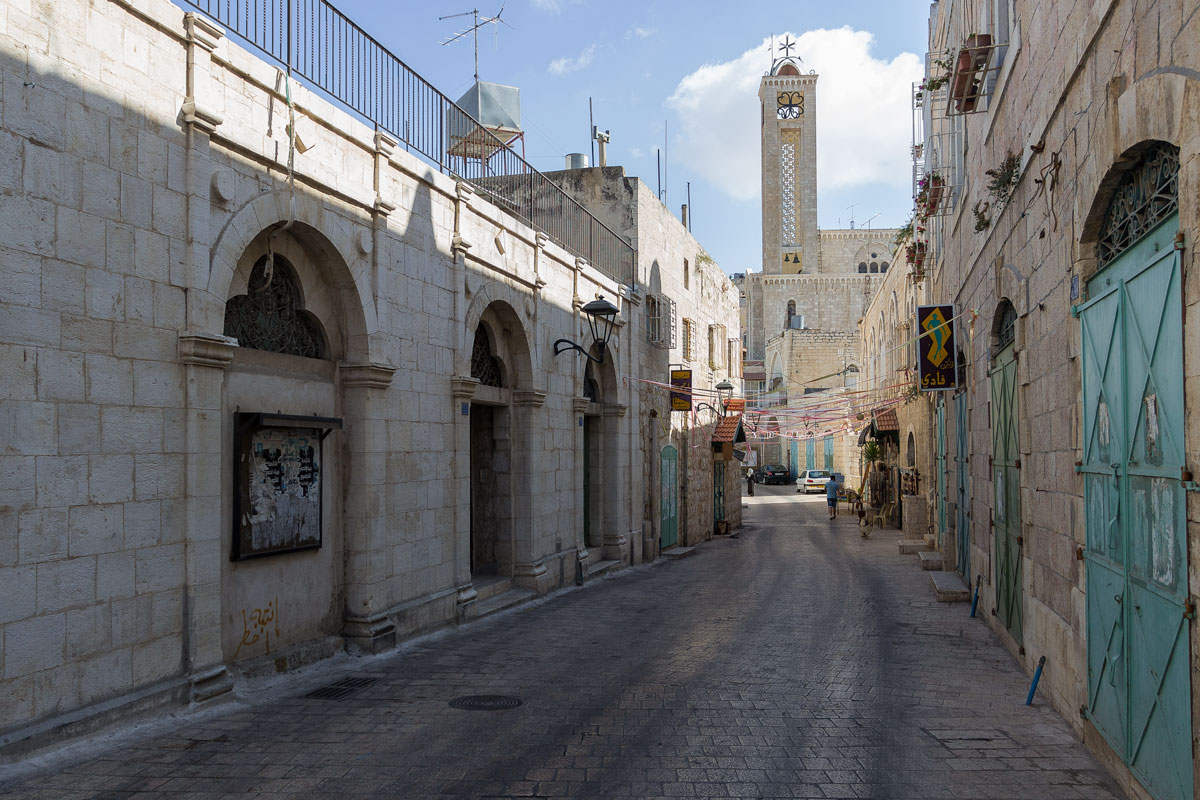
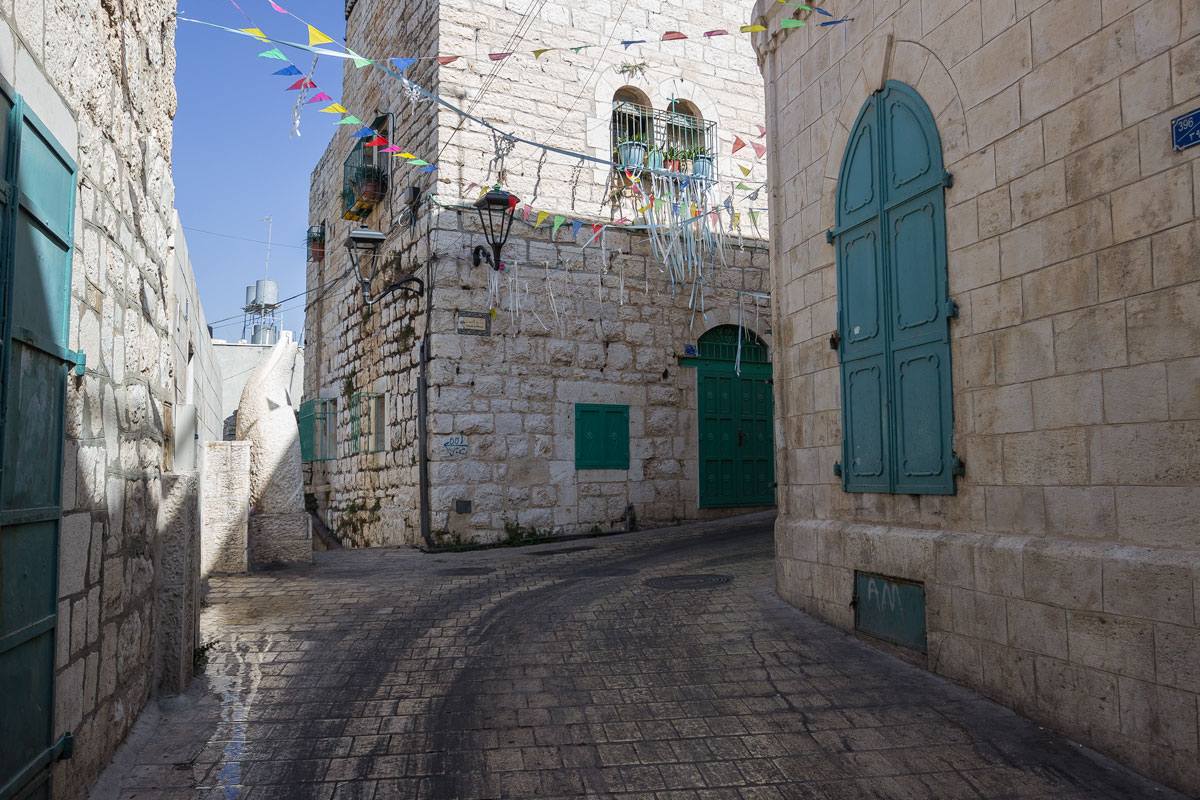
Beauty. No worse than Israel.
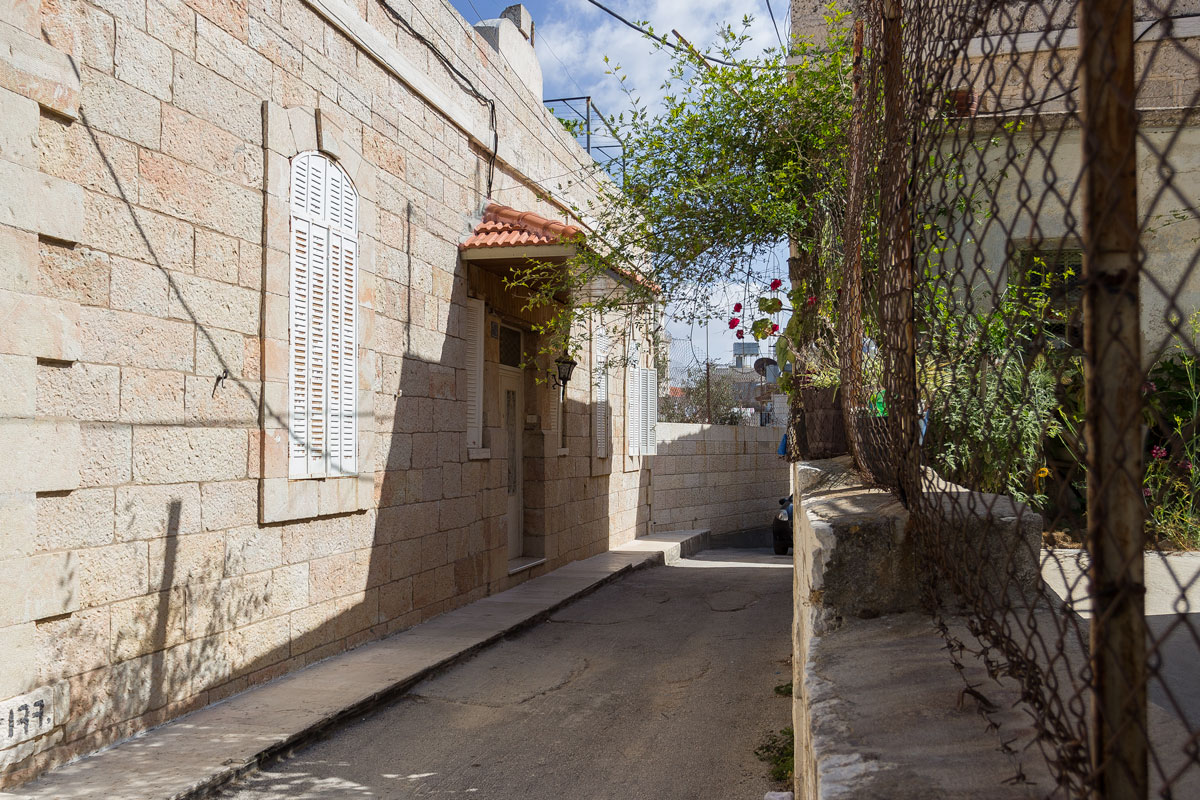
One thing casts a shadow: most windows are covered with metal bars. After all, the atmosphere here is uneasy.
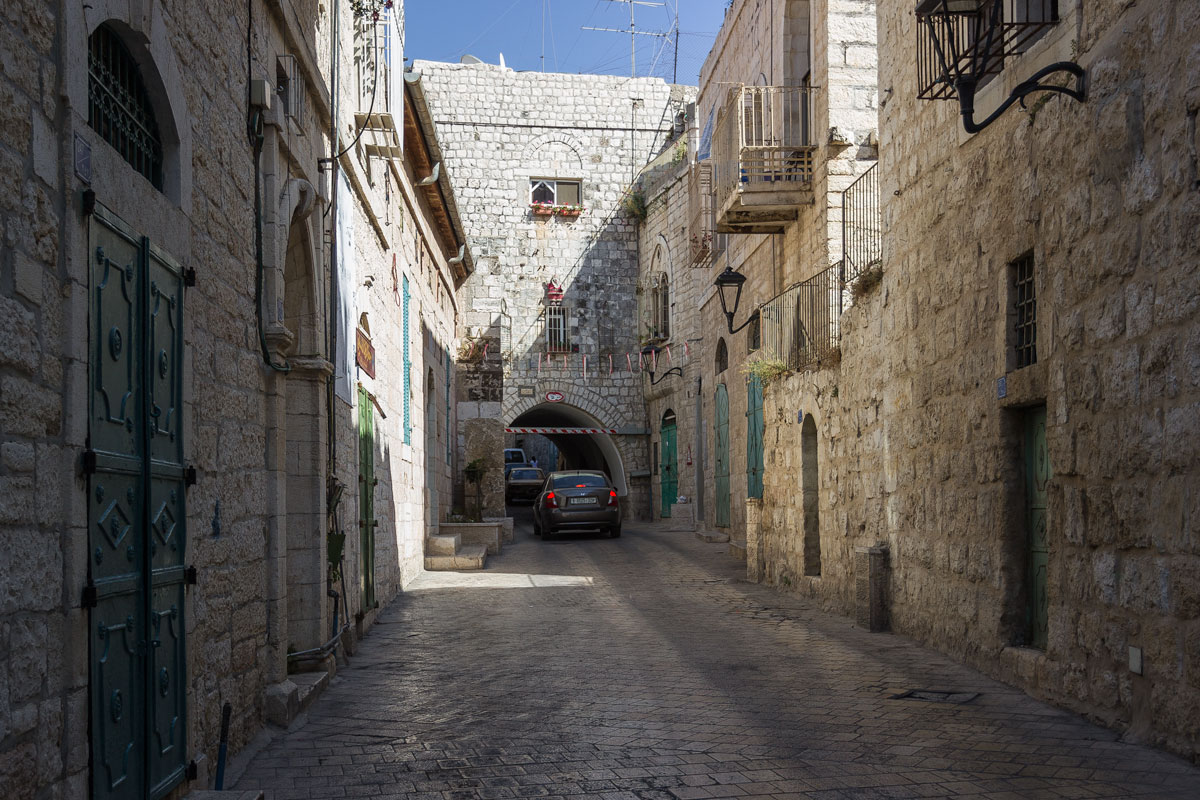
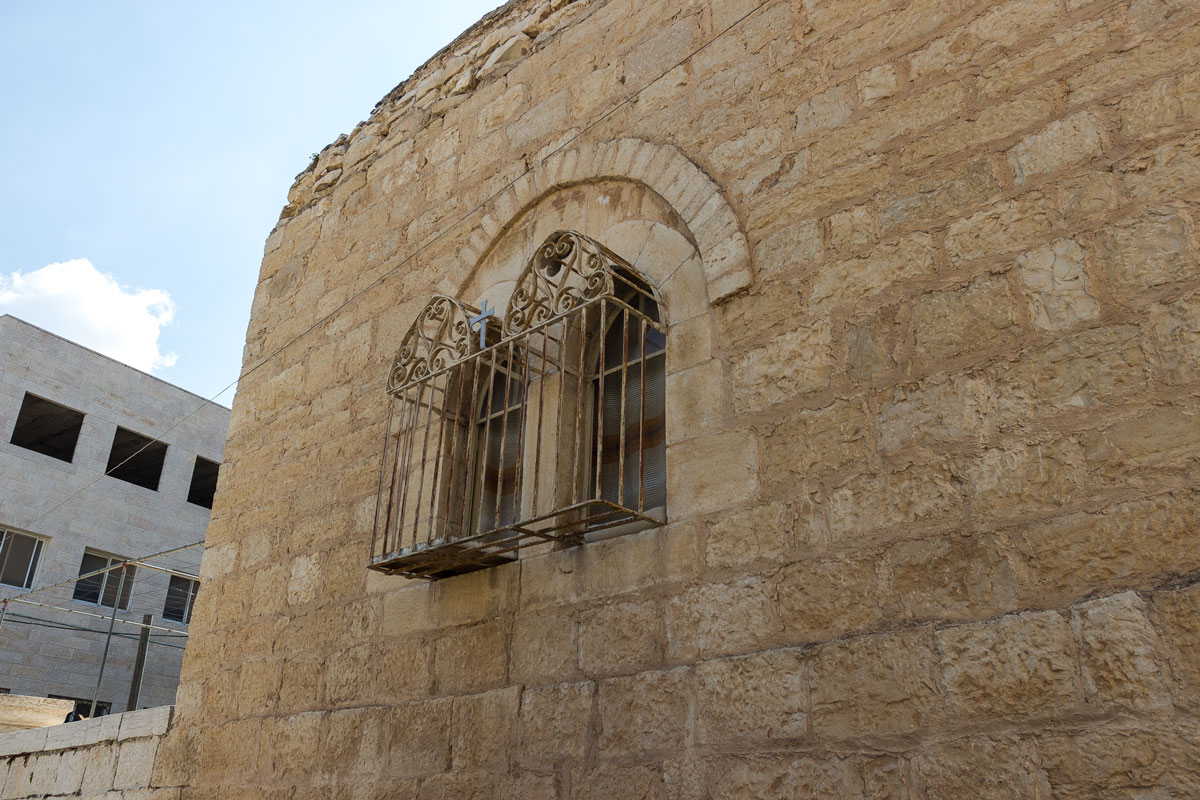
The best cities in the world are built on mountains and hills. This provides variations in elevation on the streets, meaning plenty of stairs, inclines, and a unique landscape.
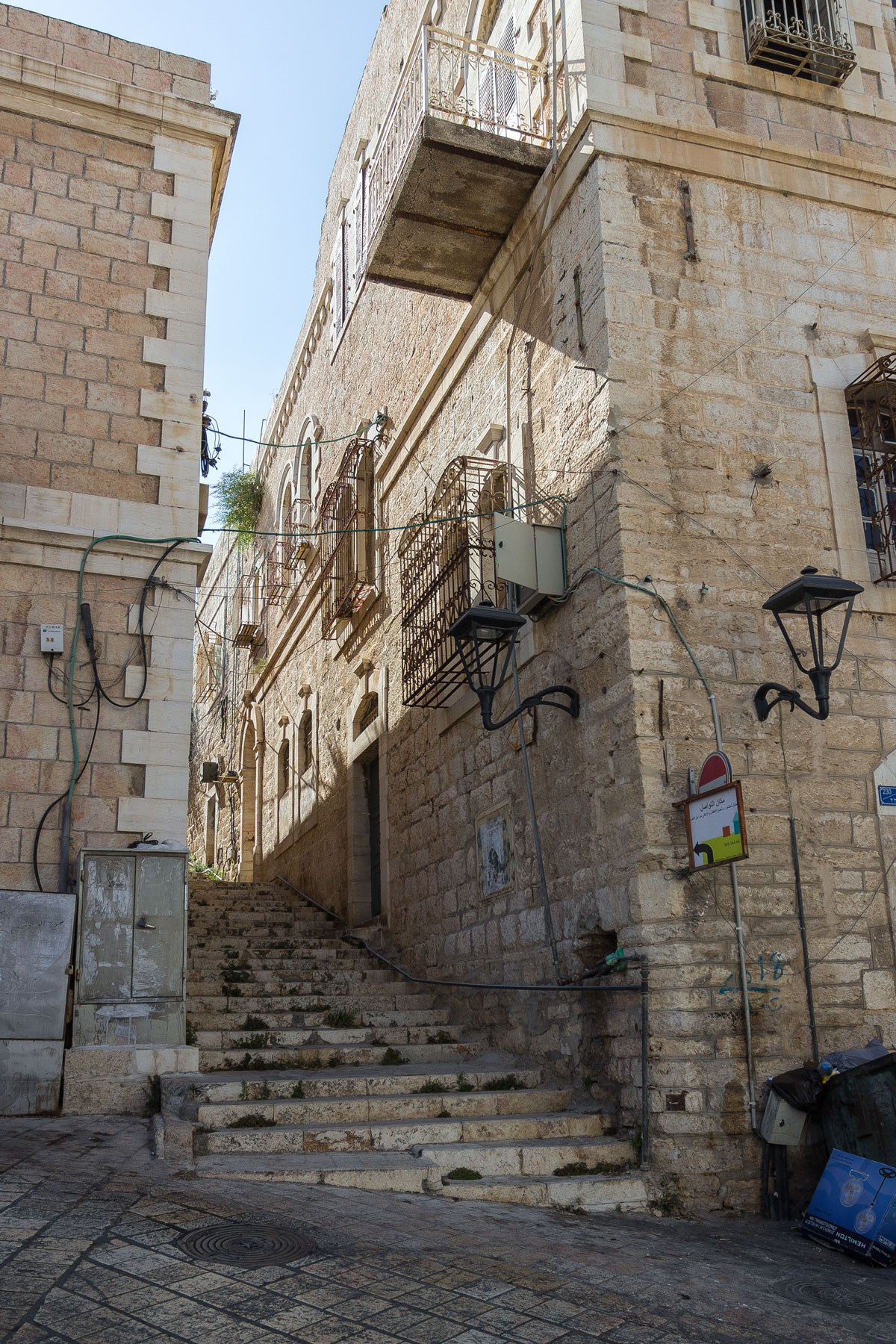
Roofs.
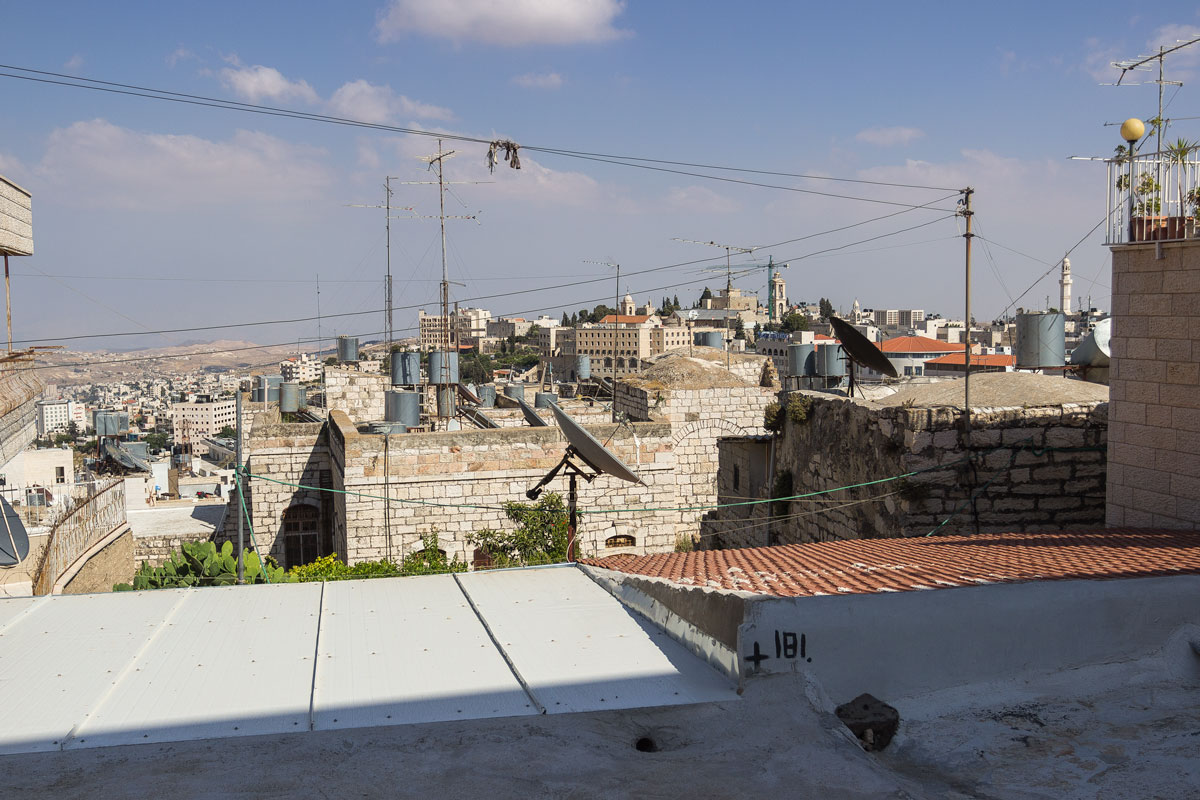
Views.
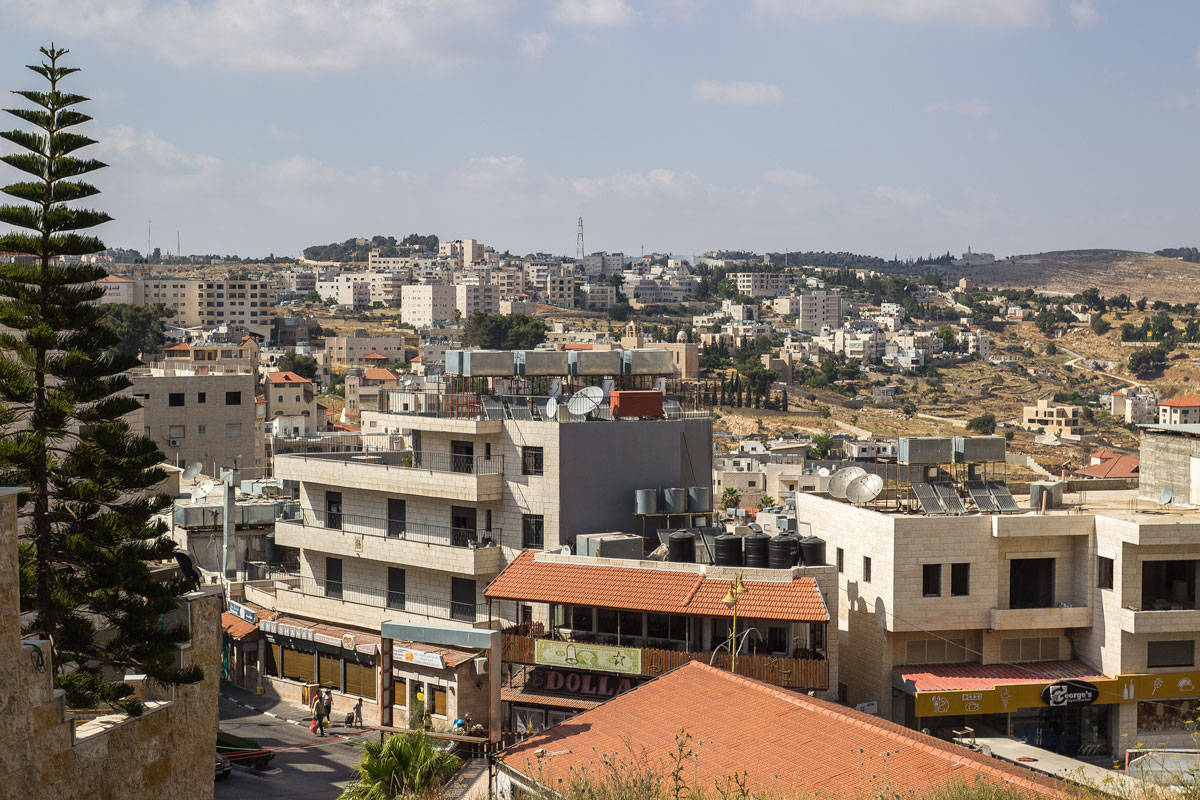
Bethlehem is the city where Jesus was born. It has a large Christian community and numerous churches.
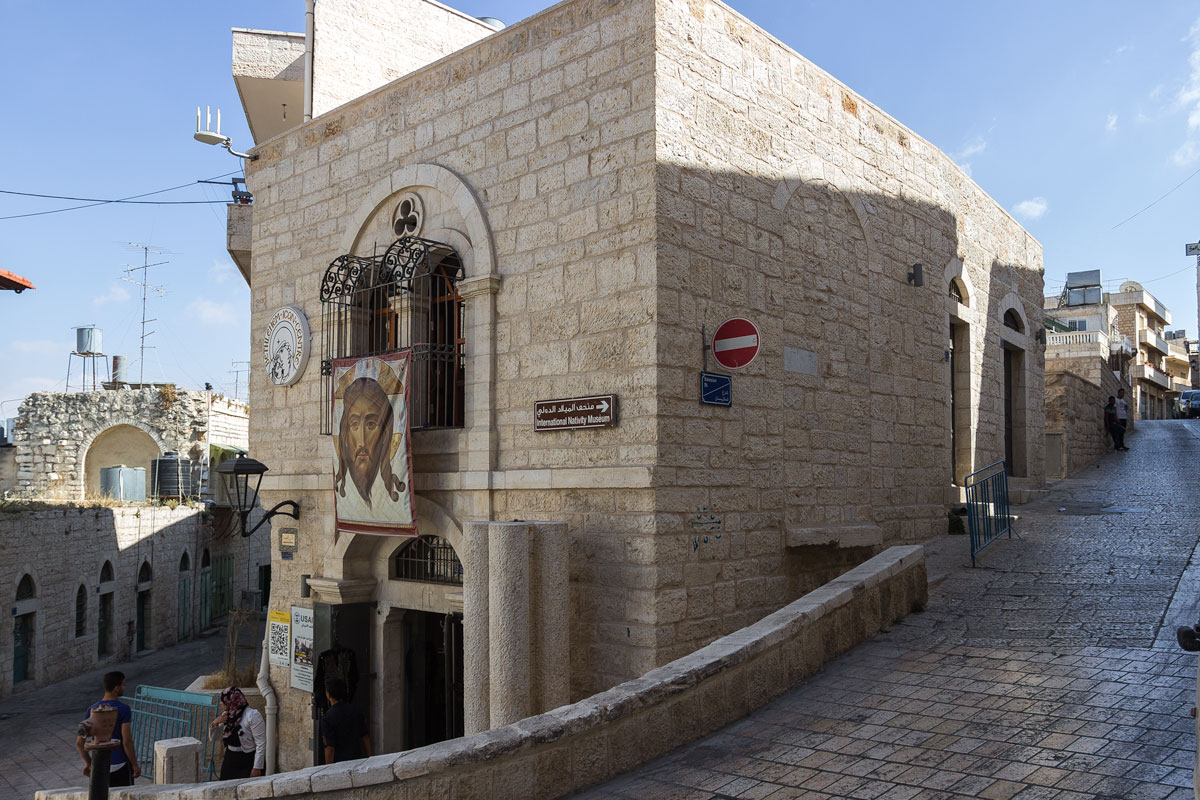
People and some semblance of life only appear in the very center, near the main square.
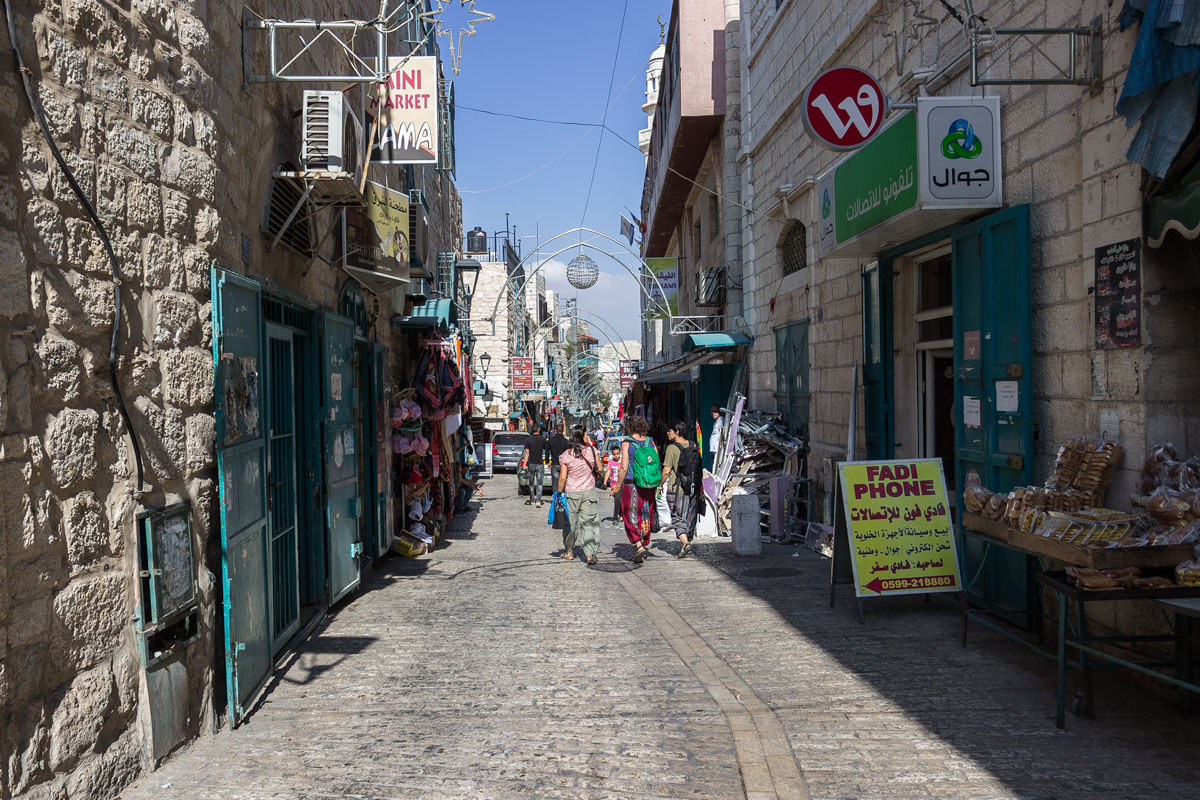
The main square is a wide, poorly developed space. On one side stands a mosque.
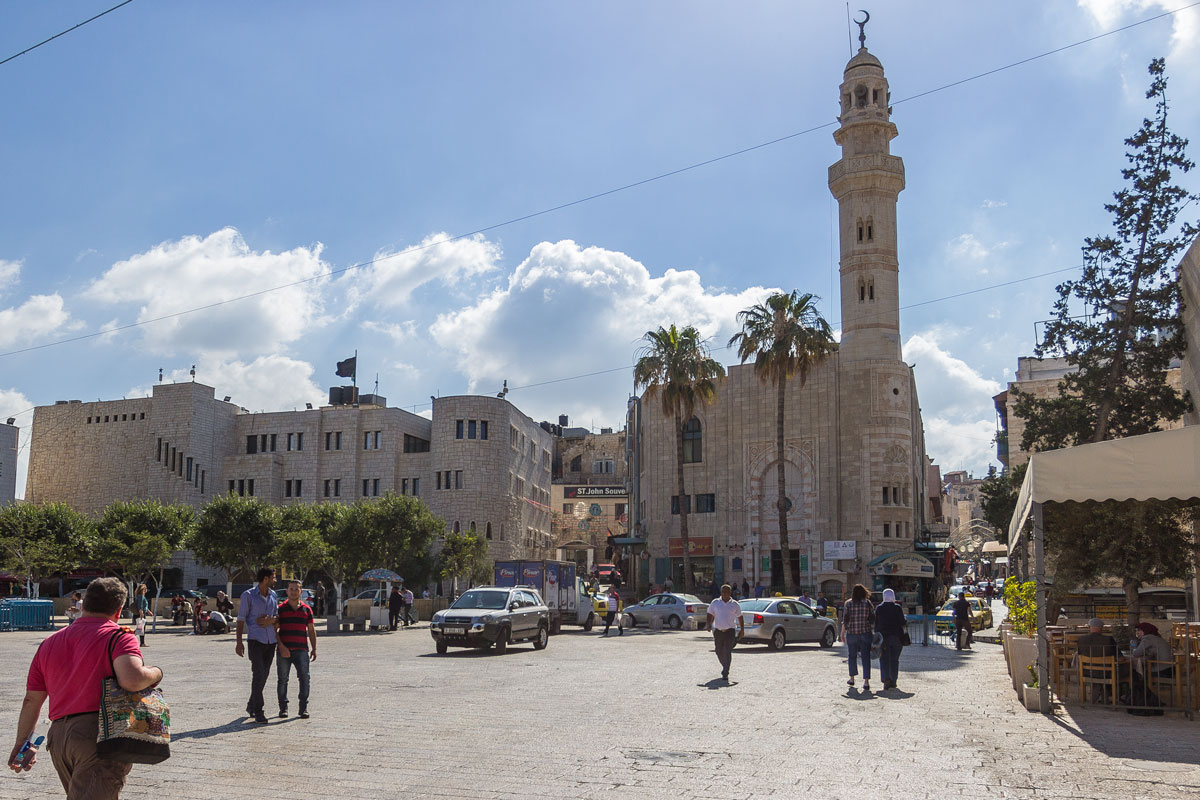
Right across is the Church of the Nativity. Among all the countless churches of Christ’s birth, this one is the most important because Jesus was born at this very spot.
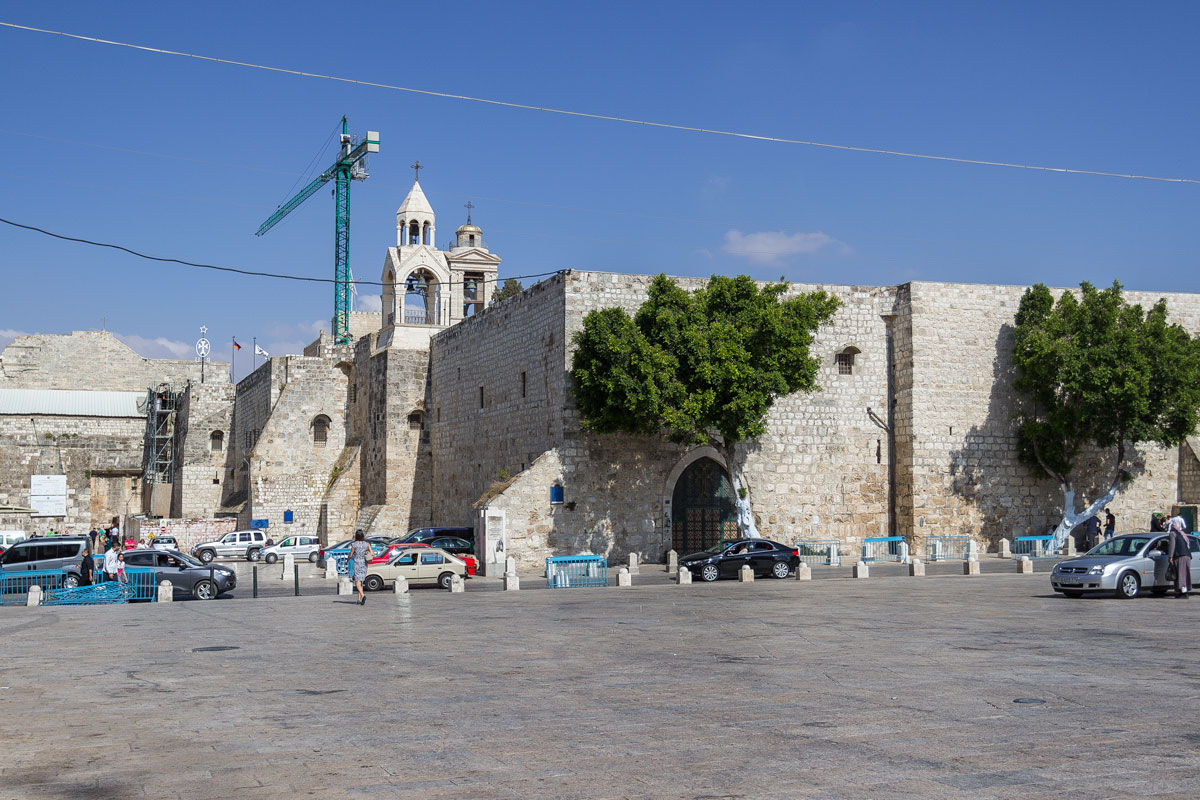
You can drive right up to the birthplace of God to pray.
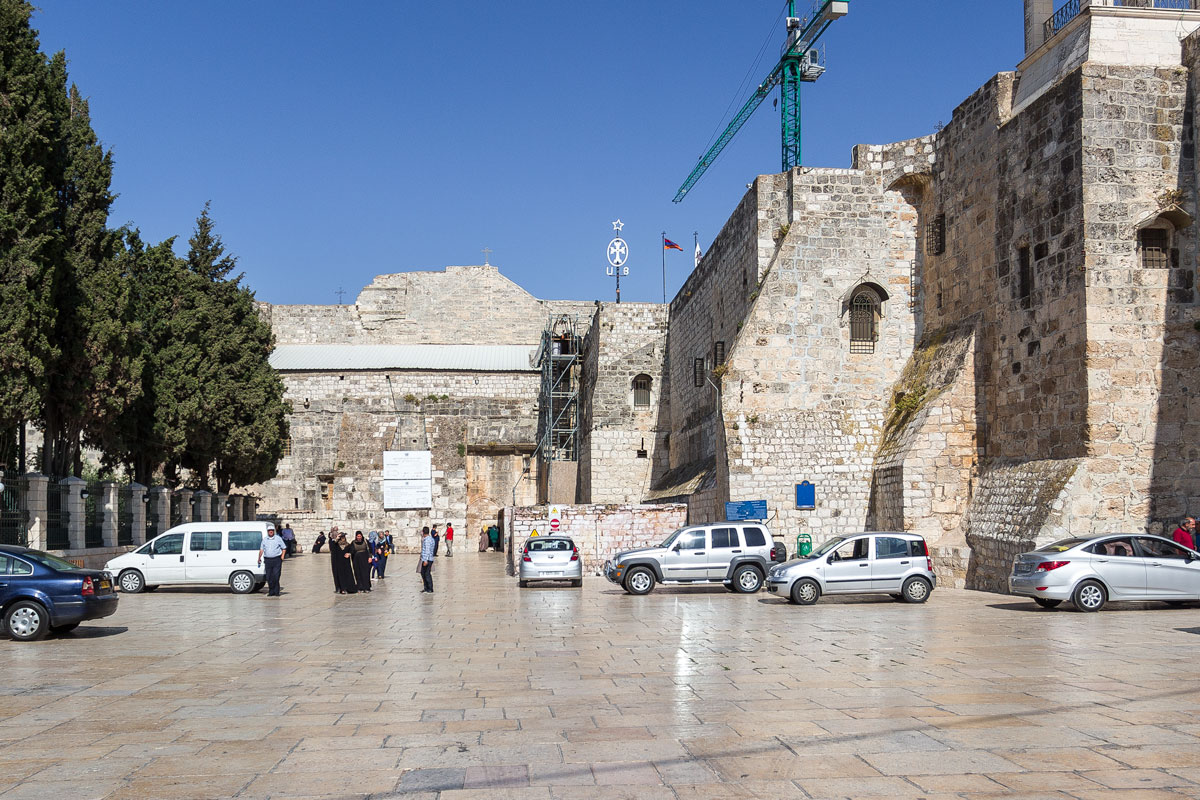
However, to enter inside, you can only do so by bowing your head and passing through a small opening in the wall.
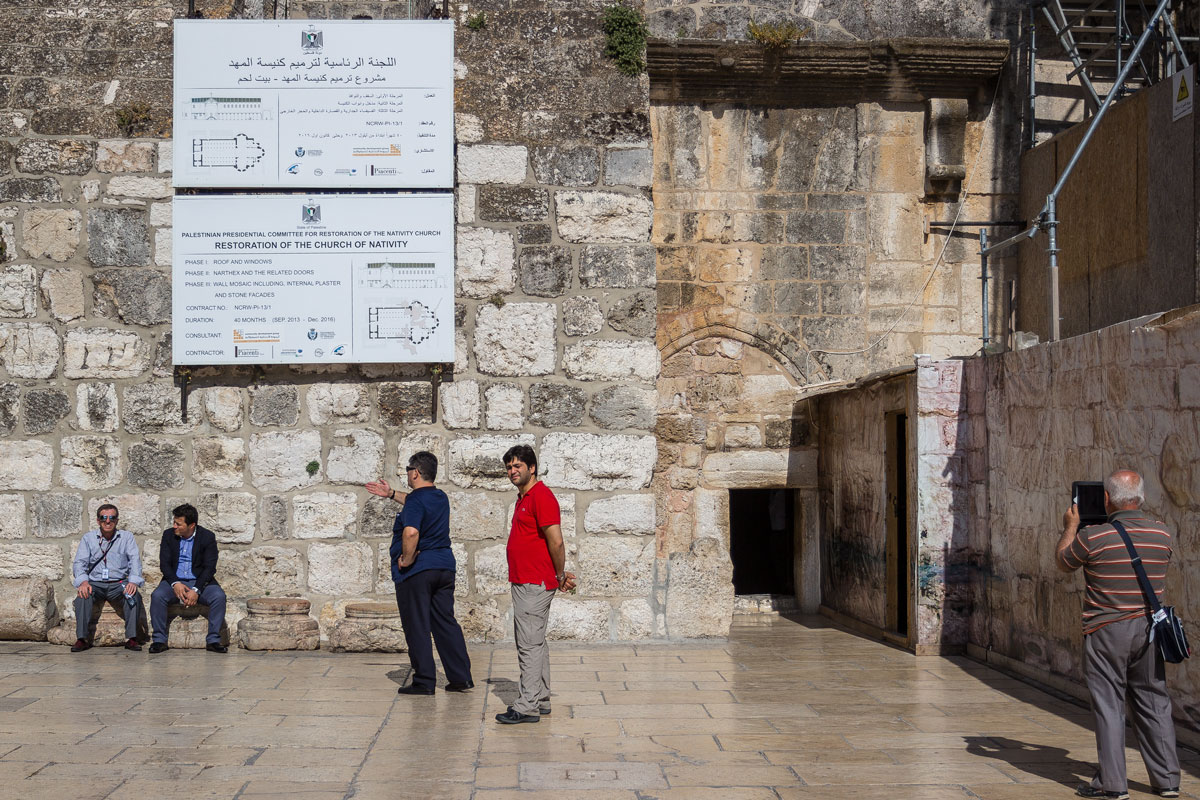
Inside, there is nothing special, just an ordinary church. Reconstruction is underway, with scaffolding and signs everywhere.
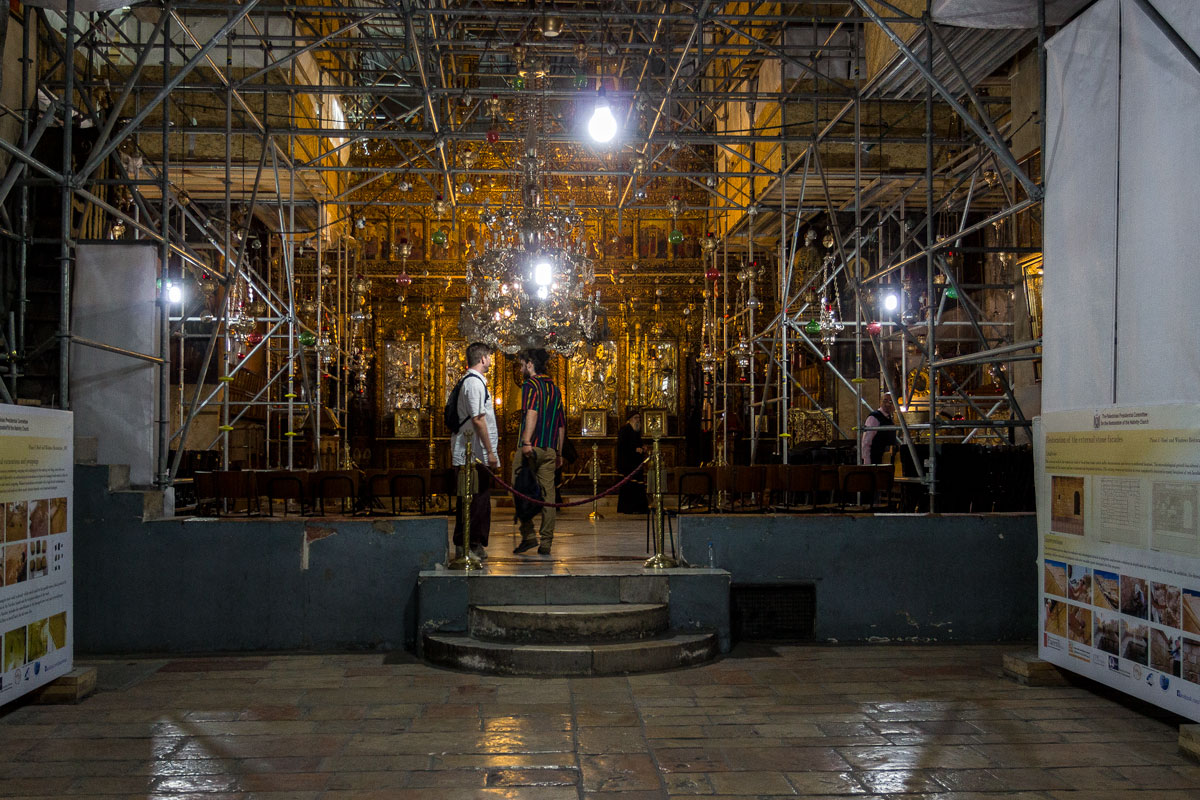
People come here to see just one place, located in a small cave at the end of the church.
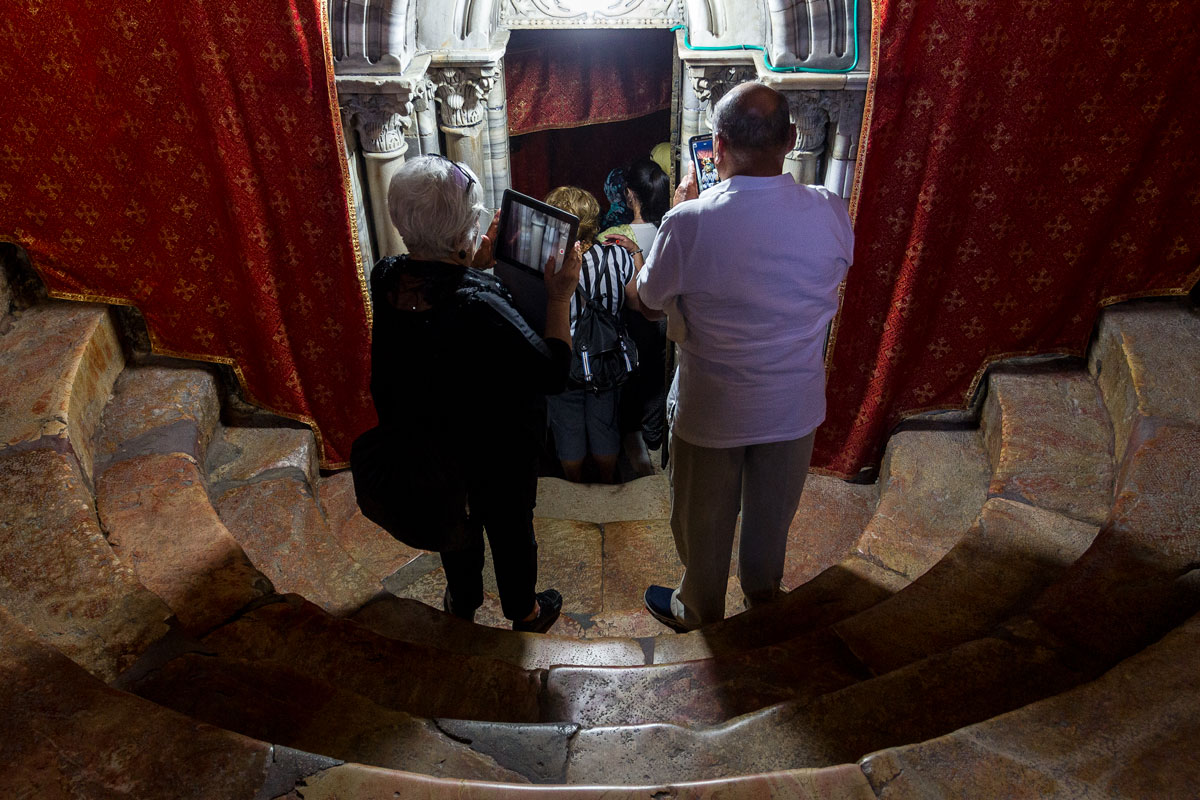
According to legend, a star fell above Bethlehem at the moment of Christ’s birth. The place of Jesus’ birth is now marked by a silver star embedded in the floor.
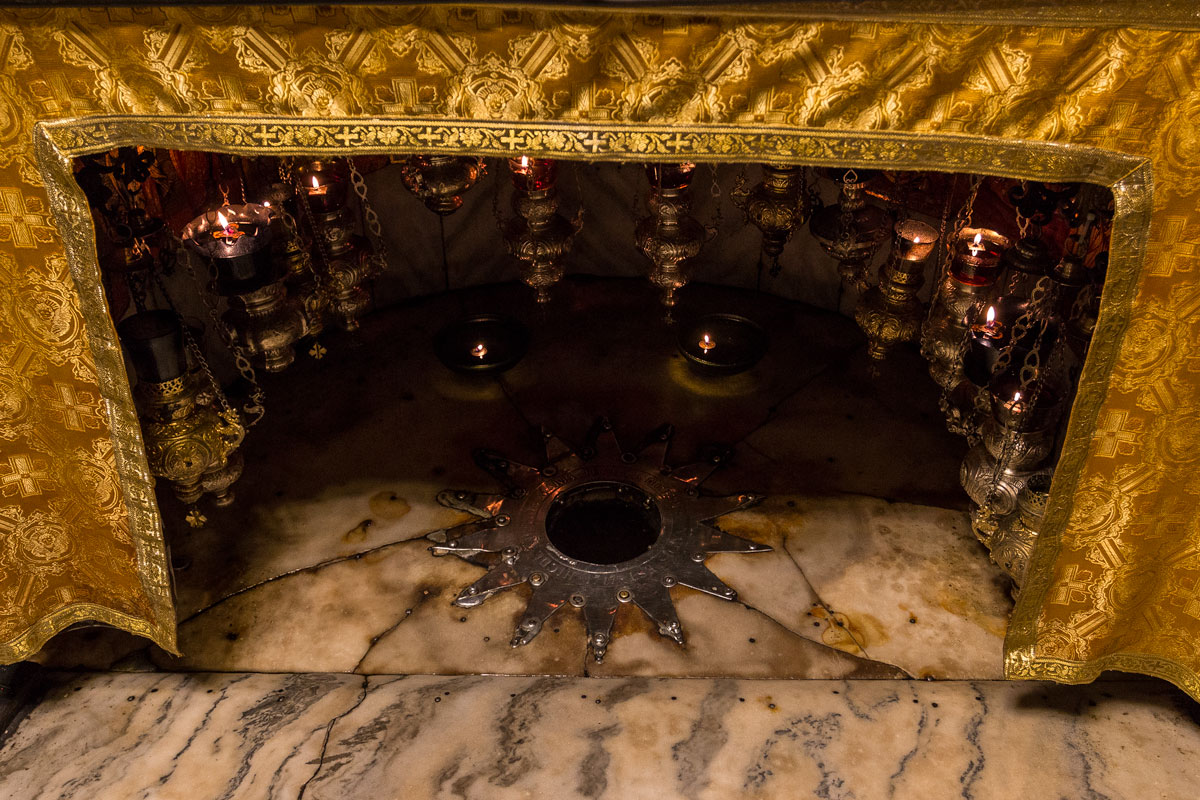
Alas, the Magi can no longer come here. The wall prevents.
